Arts & Culture, Lifestyle, Language, Travel & Community
18 | Japanese Sake 101
38 | Exporting Japanese Talent
48 | Financial Wellness Whilst Living Abroad
52 | Bunpro Review: Learning Japanese Grammar in Context


Arts & Culture, Lifestyle, Language, Travel & Community
18 | Japanese Sake 101
38 | Exporting Japanese Talent
48 | Financial Wellness Whilst Living Abroad
52 | Bunpro Review: Learning Japanese Grammar in Context

Issue No. 123 April 2023

Hello and welcome to CONNECT’s April 2023 Issue!
In the spring months, I always findmyself picking up new hobbies or obsessions. That new fiation can be a new recipe, a new fitnss regimen, a new crafting medium, you name it! Usually, though, there is a trip to a 100 yen shop involved, and maybe a few dozen how-to YouTube or TikTok videos queued up. And this issue is perfect for anyone like me. Those who, come springtime, become mini experts in some random new realm.
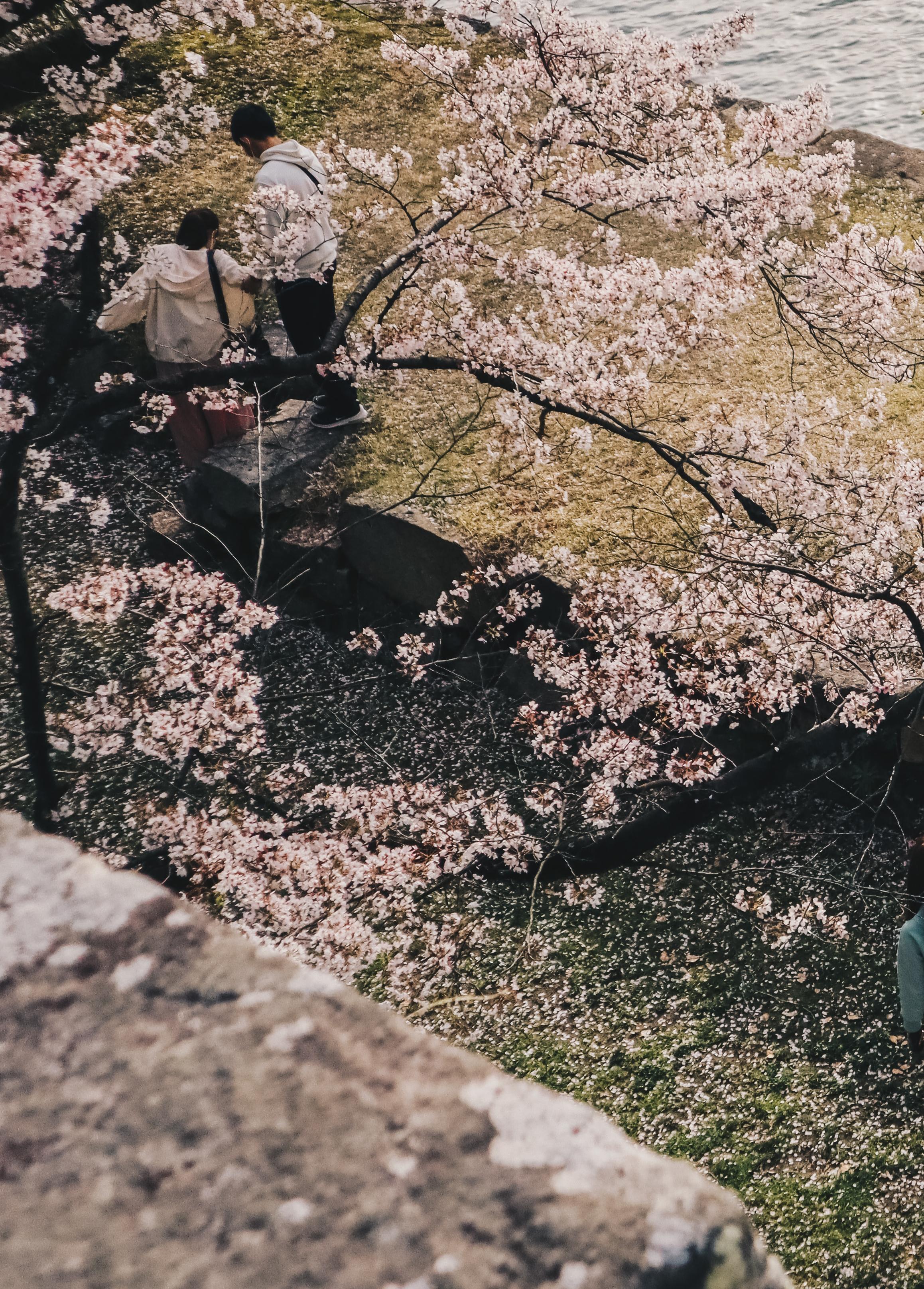
For starters, the Culture Section brings the perfect guide to Japanese sake. The iconic drink of the country is a fascination that comes with a deep history and diversifid palate. Whether you drink the rice wine or not, reading the basics of the practice and creation of the drink is the quickest way to becoming a tiny sake connoisseur. And while you’re there, read the section’s look into ikebana as well, another great hobby to pick up while in Japan.
Then, head to the Sports Section. There you’ll finda great piece on the Japanese players that have taken their talents abroad.
P.S.
Even if you know nothing about sports, this piece will give you the facts, figures, and essentials to impressing your friends and co-workers with your knowledge of athletic varieties.
For anyone with more productive fiations, I recommend heading to the Language Section or Wellness Section. In the LanguageSection,you’llfind the inspiration to go all in on your Japanese studies with realistic tips on taking your learning to the next level. Meanwhile, the Wellness Section brings you a guide to getting your finances in order. A recommended focus in preparation for the summer months of travel.
So whether you already have your new fixation or hobby for the season or are in the market for another, this issue comes full of new ideas and inspirations to help you out.
Enjoy!
Monica Hand Head EditorBy the way, the submissions for the 2023 CONNECT Art Issue are now open! Head to the Art Issue website to learn more and submit your work!
If you’d like to contribute to the magazine, please get in touch! You can send article pitches directly to me at connect.ajet.editor@gmail.com, or join the CONNECT Magazine Contributor’s Circle on Facebook to get updates from our editors when they’re on the hunt for a story!
Photo by Kenshi Kingami | Unsplash.comHEAD EDITOR connect.ajet.editor@gmail.com
Monica Hand
“Spring is the time of plans and projects.” ― Leo Tolstoy, Anna Karenina
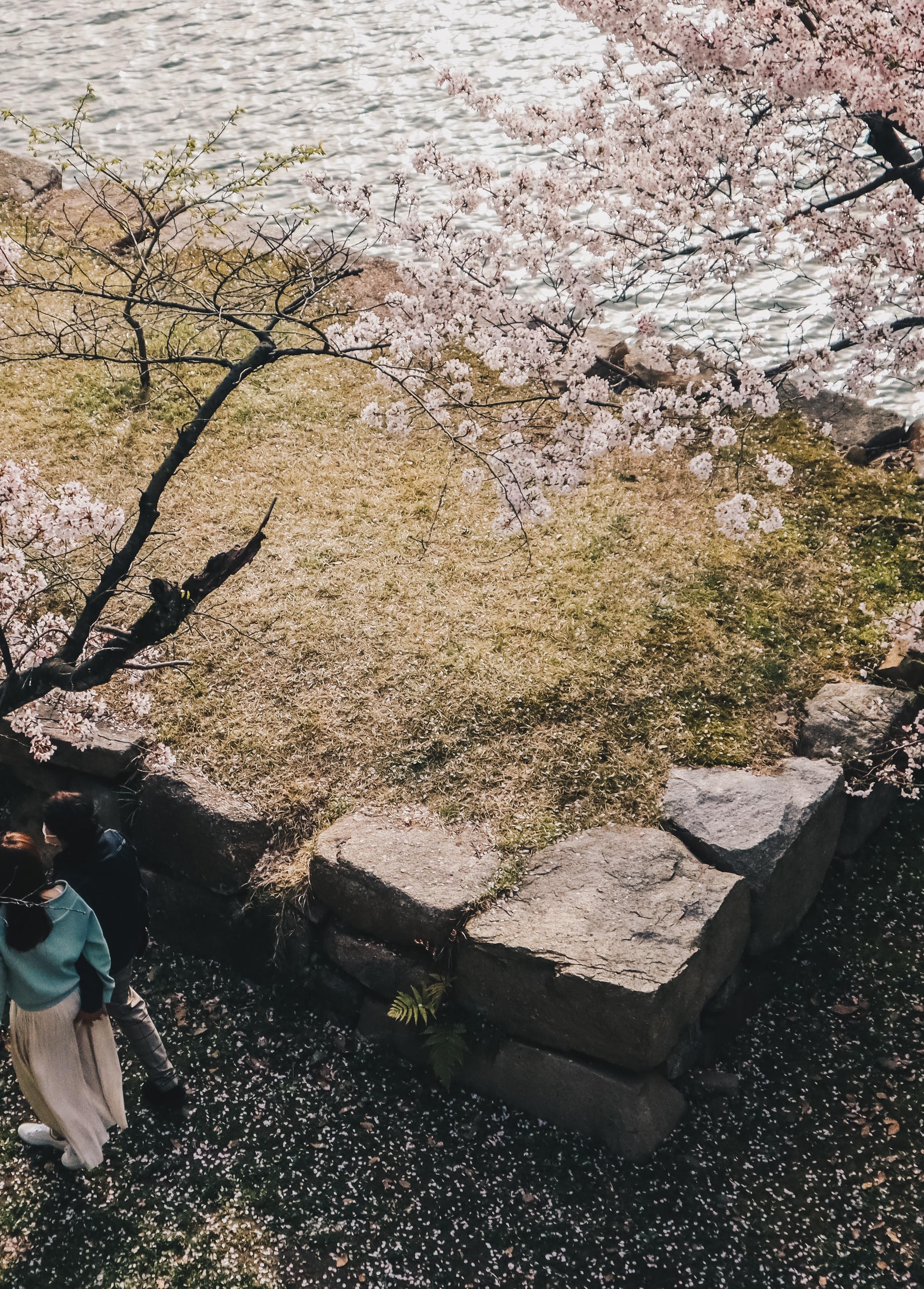
Rachel Fagundes connect.generaleditor2@ajet.net
“Those who dream by day are cognizant of many things which escape those who dream only by night.” ― Edgar Allan Poe
ASSISTANT HEAD EDITOR connect.ajet.assistantheadeditor@gmail.com
Dianne Yett
“The role of a writer is not to say what we all can say, but what we are unable to say.” — Anaïs Nin
James Ball connect.generaleditor3@ajet.net
“‘Time is an illusion. Lunchtime doubly so.” ― Douglas Adams
Sophia Maas connect.generaleditor4@ajet.net
HEAD DESIGNER connect.ajet.visualmedia@gmail.com
Lloyd Cruickshank
“Nuh bite di han weh feed yu”
Translation: Never bite the hands that feed you.
Meaning: Do not be ungrateful to the one who has helped you.
“There have been great societies that did not use the wheel, but there have been no societies that did not tell stories.” — Ursula K.Le Guin
ASSISTANT HEAD DESIGNER connect.ajet.assistantvm@gmail.com
Emily Griffith
“In winter I plot and plan. In spring I move” ― Henry Rollins
WEBSITE EDITORS
Marco Cian connect.ajet.webeditor1@gmail.com
“I’m an artist, y’know. Subject to moods.” — Crow T. Robot
Norris Wang connect.ajet.webeditor2@gmail.com
“By three methods we may learn wisdom: First, by reflection, which is noblest; Second, by imitation, which is easiest; and third by experience, which is the bitterest.” — Confucius
GENERAL SECTION EDITORS
Ryon Morrin connect.generaleditor1@ajet.net
“One man’s garbage is another man person’s good ungarbage.” — Richard “Ricky” LaFleur, from Trailer Park Boys Season 6, Episode 3
SOCIAL MEDIA connect.socialmedia@ajet.net
Valerie Mercado
“Every rejection, every disappointment has led you here to this moment.” — Waymond, from Everything Everywhere All at Once
HEAD EDITOR
Monica Hand
ASSISTANT HEAD EDITOR
Dianne Yett
SECTION EDITORS
Sierra Block Gorman
Ryon Morrin
Andy Hanson
Marco Oliveros
Knox Yoder
Pitta-Gay Powell
Chloe Holm
Alexandra Crombie
CONTRIBUTORS
Sophie McCarthy
Ashley Noelck
Sydney Michael
Knox Yoder
Andy Hanson
Alexandra Crombie
Christian Jalim
Veronica Nielsen
Jon Solmundson
Mark Christensen
HEAD OF DESIGN & LAYOUT
Lloyd Cruickshank
ASSISTANT HEAD DESIGNER
Emily Griffi
ASSISTANT DESIGNERS
Kristen Camille Ton
Sara Gyi
Amy Ratcliffe
COPY EDITORS
Jon Solmundson
Natalie Andrews
Ashley Leung
Sage Olges
GENERAL SECTION EDITORS
Sophia Maas
James Ball
Ryon Morrin
Rachel Fagundes
WEB EDITORS
Marco Cian
Norris Wang
SOCIAL MEDIA
Valerie Mercado
COVER PHOTO

Tunafis
TABLE OF CONTENTS PHOTO
AJ
ART & PHOTOGRAPHY
Tunafis
Kenshi Kingami
AJ
Jonah Elkowitz
Luca Florio
S.Tsuchiya
This magazine contains original photos used with permission, as well as free-use images. All included photos are property of the author unless otherwise specifid. If you are the owner of an image featured in this publication believed to be used without permission, please contact the Head of Graphic Design and Layout, Lloyd Cruickshank, at visualmedia.connect@ajet.net. This edition, and all past editions of AJET CONNECT, can be found online at http://ajet.net/ajet-connect/magazine-issues/ or on our website. Read CONNECT online and follow us on ISSUU
Photo by AJ | Unsplash.comCONNECT | Art
8 Life Among Sculptures: Ube, Yamaguchi
CONNECT | Entertainment
14 Reviews and Recommendations: The Last of Us
CONNECT | Culture
18 Japanese Sake 101
28 The Quiet and Dynamic Art of Ikebana
CONNECT | Sport
38 Exporting Japanese Talent
CONNECT | Wellness
48 Financial Wellness Whilst Living Abroad
CONNECT | Language
52 Bunpro Review: Learning Japanese Grammar in Context
56 Minimal Pairing: A simple teaching strategy to sharpen English pronunciation
CONNECT | Travel
62 Spring Flowers of the South: Where to Find Japan’s Fleeting Florals

CONNECT | Community
82 Chari-ing is Caring
ART EDITOR connect.ajet.arts@gmail.com
Sierra Block Gorman
“People who say change is impossible are usually pretty happy with things just as they are.” ― N.K. Jemisin, from The City We Became
ART & CULTURE DESIGNER connect.ajet.assistantdesigner1@gmail.com

Kristen Camille Ton
“The most beautiful thing we can experience is the mysterious. It is the source of all true art and all science. He to whom this emotion is a stranger, who can no longer pause to wonder and stand rapt in awe, is as good as dead: his eyes are closed.” — Albert Einstein
ENTERTAINMENT EDITOR connect.ajet.entertainment@gmail.com
Knox Yoder
“Once you feel like you’re being dictated by other people’s expectations, [things] usually backfire.” — Rob Zombie
ENTERTAINMENT DESIGNER connect.ajet.assistantdesigner4@gmail.com
Sarah Gyi
“And I can’t forget it, all of the love, all of the love, as we stood tall together.” — Oh Wonder, from My Friends
CULTURE EDITOR connect.ajet.culture@gmail.com
Marco Oliveros
“When the soul suffers too much, it develops a taste for misfortune.”
— Albert Camus
COPY EDITOR connect.ajet.copy1@gmail.com
Natalie Andrews
“A cat understands how to be pleasant in the morning. He doesn’t talk.” ― Tamora Pierce, Mastiff
Photo: S. Tsuchiya | Unsplash.com

received a request for a school visit the other day. That is not, in and of itself, unusual. The other Yamaguchi CIRs and I are frequently requested for trips around the prefecture to present about our home countries and cultures. Rather, it was the content of this request that made it so unique.
“Mizome Elementary School, Ube City. We would like all the prefectural CIRs to come and talk about statues.”
I had to make a presentation about. . . statues?



aving wracked my brain for a while considering how I was supposed to make a cultural presentation about statues, I eventually settled on introducing some famous American landmarks, like the Statue of Liberty, Mount Rushmore, and Cloud Gate (the Bean), and included photos of myself at these locations.
Being satisfied with my interpretation of the request, I was struck when upon entering the school grounds we came face-to-face with Plantroncia Ube, a large, white, metal sculpture that felt like it had been taken straight out of a modern art exhibit and plopped down into the courtyard of this otherwise average-looking elementary school.
It occurred to me that I may have misunderstood the request for a talk about statues.
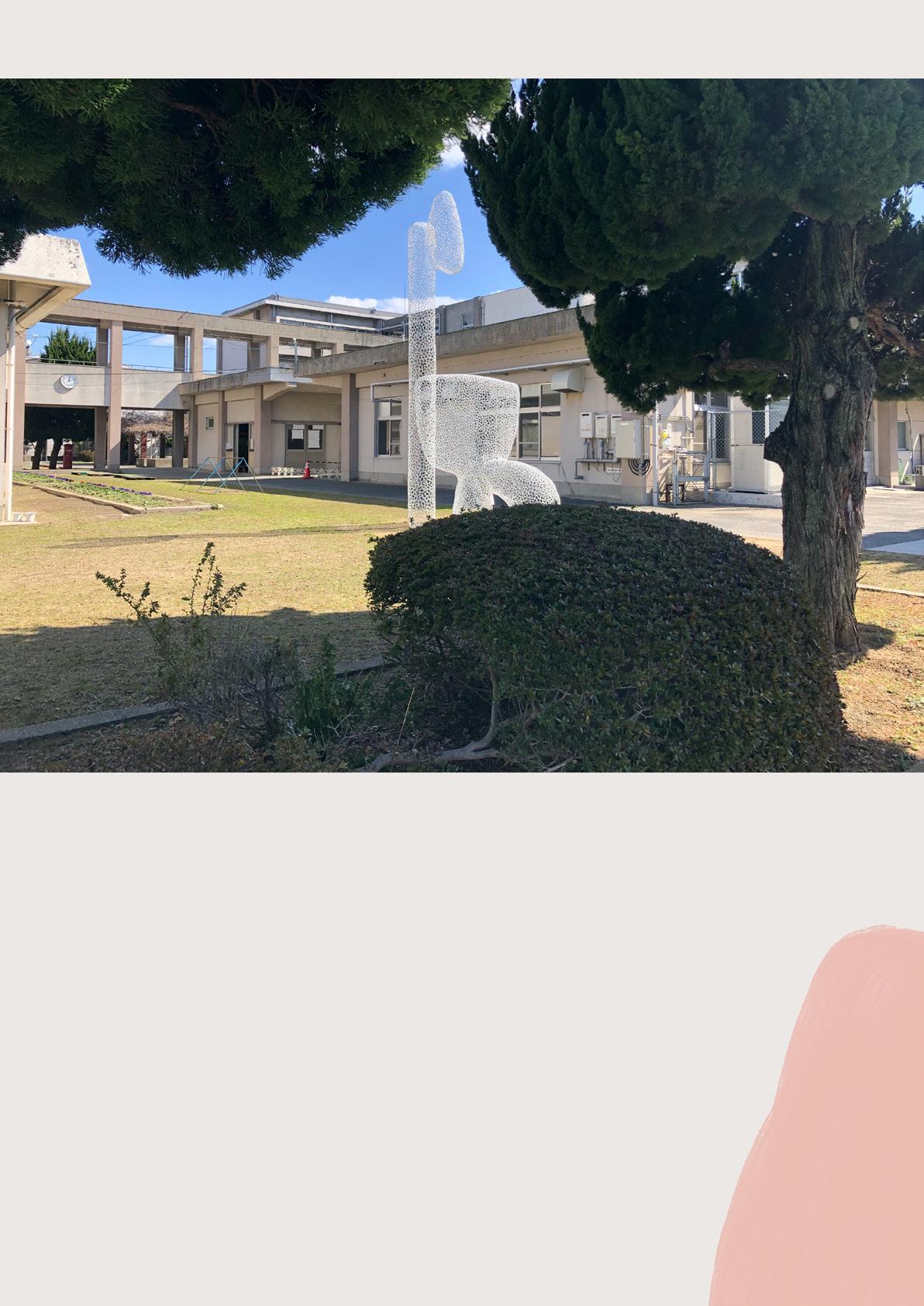
fter we were led into the classroom and introduced, the teacher explained that each of the fifteen students would give a brief presentation, the CIRs would share their thoughts on the presentations, and then the CIRs would present. I took out my notebook and prepared to note down students’ favorite shows and favorite colors, as those were the contents of every minipresentation I had seen students give in elementary school.
The first student came up, connected their tablet to the TV, and displayed a photo of the sculpture we saw outside their school. It was a wide shot, taken from the position of someone entering the school as we had done not 30 minutes previously. The student shared their name, and then started to talk about why they had chosen this photo. “You can see Plantronica Ube and the school at the same time, so I think it’s a nice picture. It’s nice to be able to see a statue for free every day, so I’m glad we have a statue.”


The next student approached, connected their tablet, and again a photo of the sculpture appeared, but this time taken from so low they must have gotten down into the grass to capture it. That student explained that they liked seeing the sculpture from this angle, as you could see the tree and the sky through the sculpture, which made the shape look different from when it’s viewed from a standing position. I noted this down.
One after another the students approached and explained their photos, and the importance of incorporating sculptures into a city. Though only in fifth grade, I was impressed with their observations and opinions.
They took photos capturing the sun as a backlight to the sculpture, and the clouds surrounding it. The angle one views from, the time of day, climbing and viewing the sculpture from above—these all change how one experiences a statue. Not only that, but seeing sculptures in their everyday environment exposes children and adults to new forms of art, brightens an otherwise empty area, and allows one to feel how the artist was feeling. One can bring one’s own experiences to the sculpture, which then provides a unique viewing experience for every person, even if viewed at the same time and in the same place.
ll of this I furiously jotted down, not having been prepared for a life lesson on the importance of art while sitting in a small wooden chair in a fifth grade classroom.

Of course, kids are kids, and some of them were less profound, but none of them were unthoughtful. A favorite presentation of mine came from the student that thought the sculpture looked like a rabbit when viewed from a certain angle, who took the liberty of drawing out the ears and eyes so we, too, could see the rabbit.
ou may be curious to know, as I was, why this elementary school is in possession of a large, metal, modern sculpture. When we left the school to head back to our office later that day, we passed by the sculpture again. I felt compelled to stop and look at it for a minute, and took some photos. I then noticed the plaque at the base.
lantronica Ube was previously an entry in the UBE Biennale International Sculpture Competition, the first outdoor sculpture exhibition, and currently the largest sculpture festival in Japan. Every two years about 100 pieces are installed in Tokiwa Park, including previous favorites. The city purchases the winning pieces, and either gives them a permanent home at the park, or installs them elsewhere around the city.
It wasn’t just these students, but also the residents of the city that had embraced life amongst the sculptures.
nspired by the students and their photos, I focused my presentation that day less on where famous American sculptures were and why they had been designed, and instead talked about my experience visiting each of them, when I had gone and why, and the impression they had left on me. This went over very well.
I finally understood why we had been asked to talk about statues. They’re everywhere, and while you’ve likely gone out of your way to see the largest and most famous ones, you might forget to notice those closest to home.
Take a walk and look around. What do you see?


ydney Michael is a first-year CIR, fourth-year JET in Yamaguchi Prefecture. She got her undergraduate degree in Asian Languages and Literatures. Currently, her favorite sculpture in Tokiwa Park is The Birth of Life, though this is bound to change.


In the world of video games, PlayStation exclusive The Last of Us has been hailed as one of the best games ever made. For years, many gamers have wanted to share the brilliance of the game’s story with friends and family that don’t play video games but have never had the chance to. Now, with HBO’s The Last of Us television adaptation, we finally have that chance.
Unless you’ve been living under a rock for the entirety of 2023, you probably know how well this adaptation has been received by longtime fans and newcomers alike. The series has taken the world by storm, breaking HBO Max streaming records and garnering high review scores from almost all outlets. This outlet won’t be any different, as this reviewer considers The Last of Us season one to be one of the best television shows in recent memory.


For those unaware, The Last of Us takes place 20 years after a nationwide pandemic caused the collapse of civilization, turning people into fungal-based, zombie-like creatures. The show follows the story of Joel Miller and Ellie Williams, two survivors whose lives become intertwined after Joel is tasked with escorting Ellie across America.

Coming in at nine episodes, The Last of Us is a masterclass in compelling television and adaptation. Many of the most iconic scenes from the game are lifted directly into the show, such as Joel and Ellie’s confrontation in episode six and the harrowing climax of the first season. Other scenes (or in some cases, entire episodes) are expanded from the game and introduce new plotlines. For instance, while Frank and Bill’s relationship is hinted at in the game, the show takes the entirety of episode three to focus on them and even changes their ultimate fate. While some fans of the game have taken issues with the creative liberties the show’s creative team has taken with the source material, I believe every change only enhances the overall story, adding to the lore of the world and presenting viewers with some real tear-jerking scenes.

Even with stellar source material and great writing for the TV adaptation, the show would have been a bust without a great cast to bring the show to life. Luckily, every single character feels like they were born for their roles. Pedro Pascal and Bella Ramsey in particular steal the show as Joel and Ellie respectively. They not only perfectly embody the characters from the games but also deliver heartwrenching performances in every episode. The supporting cast, which changes almost every episode, also feels perfect, with standout performances from Nick Offerman, Murray Bartlett, Melanie Lynskey and Scott Shepherd in particular.

While many video game adaptations are average at best and abysmal at worst, The Last of Us proves that adaptations of the medium can be just as strong on the silver screen as they are on your PlayStation. Through the TV series, millions of people who would never pick up a game controller for themselves were able to experience the brilliantly moving story of Joel and Ellie for the first time. With so many eyes on season one, HBO quickly renewed The Last of Us for a second season to adapt The Last of Us Part II. The series is likely to get a third season as well, however. In an interview with GQ, show creators Neil Druckmann and Craig Mazin were asked if the second game would be adapted into one season, with Mazin responding, “No. No way.” So, it's safe to say we have a few more years of Clickers and Infected in our future.

With stellar writing and acting, The Last of Us season one serves as a worthy adaptation of the original game. It has entered the lexicon of tremendous television series and is a must-watch for anyone interested in post-apocalyptic stories or compelling dramas.
Knox Yoder (they/them) is a first-year JET living and working in Ureshino, Saga. They have too many hobbies, including but not limited to binging horror movies, playing new and old video games, reading manga, and nerding out over My Chemical Romance. They enjoy visiting heavy metal and rock bars in every city they can.
apan is internationally admired for many aspects of its culture, including sushi, anime, and video games. However, I would contend that there is no cultural artefact more well known and entwined with Japanese society and history than sake. Often (incorrectly) referred to as “Japanese rice wine,” this alcoholic beverage is experiencing an international boom. And as a longtime sake nerd I want to share my passion by giving you a brief look into the world of sake.
Let’s quickly get vocabulary out of the way. What many foreigners will call sake or

rice wine is actually referred to as nihonshu in Japan. Here the word “sake/酒” just means alcohol. But therein lies evidence of its cultural centrality. Nihonshu is made from specialty rice through a unique double-parallel fermentation process. This fermentation method has been developed over thousands of years in Japan and is different from how beer, liquor, and wine are made. Calling it rice wine is inaccurate to the process, although it does reflect its tabletop popularity as a drink with around 15% alcohol by volume (ABV). Additionally, like wine, nihonshu is used in many religious ceremonies as a central part of Shintoism—although it’s not symbolising anybody’s blood. It’s still nihonshu.



The earliest evidence we have of humans making alcoholic beverages is from 7000 BCE. In what is now called China, people were making fermented alcohol from millet, grapes, honey, and rice. Zooming into Japan, the first written record of a Japanese rice-based alcohol is from a Chinese source from the third century CE. In 689, a nihonshu brewing division was established in the Japanese imperial court and in the eighth century we get the first written records of Shinto mythologies that mention nihonshu. In essence, the traditions and culture around nihonshu have been a part of Japan since before the Imperial Family was established.
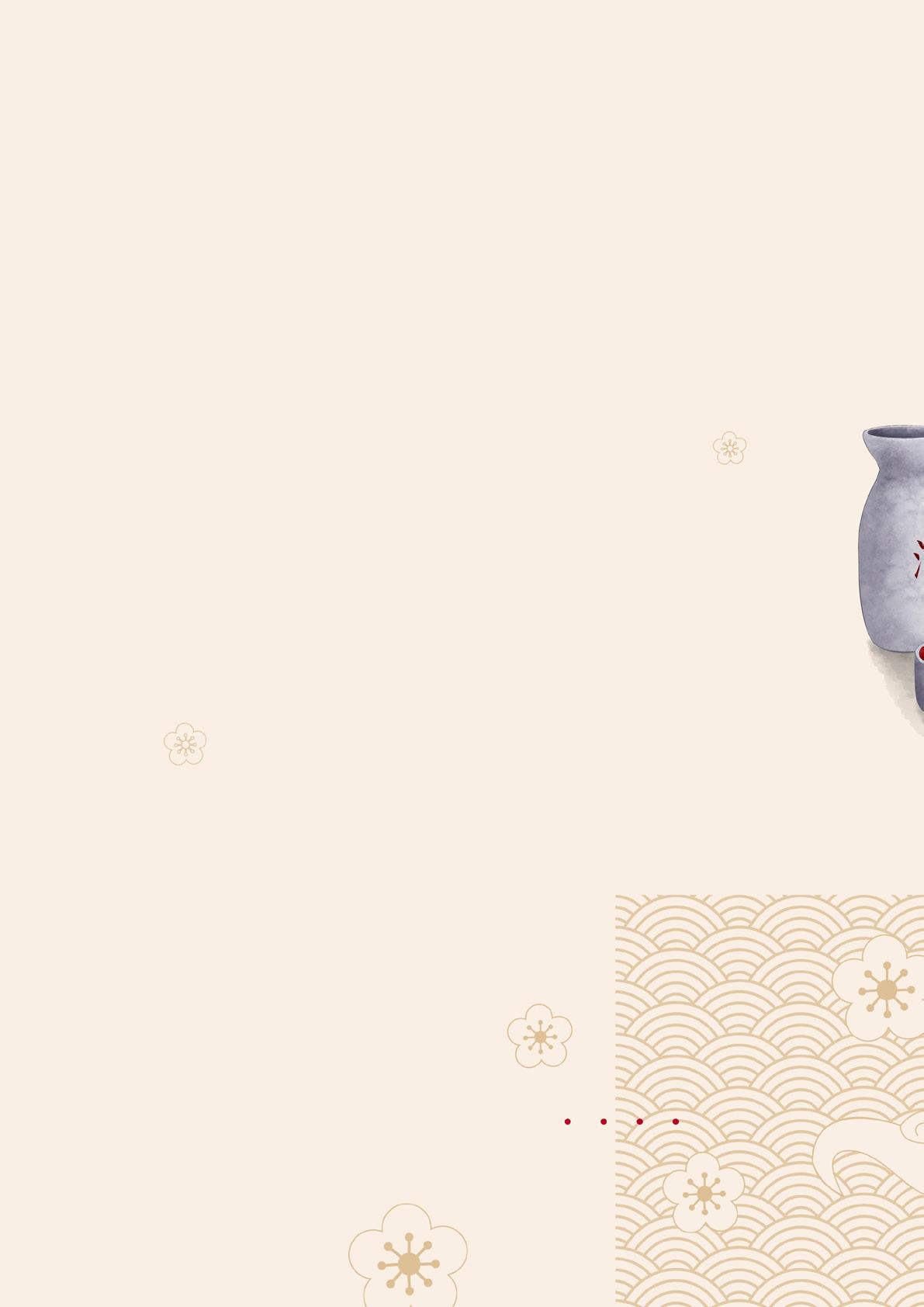
The tradition of brewing nihonshu most likely started in Shinto temples. In Shintoism, nihonshu plays a central role in many rituals and traditions. It is often used as an offering to the gods, either by being placed at a shine or poured onto the ground. Ritually, nihonshu must always be served to the gods first. Nihonshu plays a role in numerous ceremonies. One of the more common examples is marriage. In a Shinto wedding ceremony the first ritual is the Shinzen kekkon, which can be translated as the “wedding before the kami.” This is a purification ritual centered on the couple sharing nihonshu sometimes referred to as the san-san-kudo or “three-three-nine” ritual. Three ceremonial cups are presented to the couple and they take three sips from each, creating this three, three, nine pattern. Since the number three cannot be divided by two, it symbolizes unity.
Another important tradition using nihonshu is the custom of drinking o-toso on the first day of the New Year. O-toso is a special kind of spiced nihonshu that is said to have medicinal properties. The ritual drinking of o-toso is said to ward off sickness for the upcoming year. There is also a popular saying that goes “if one person drinks it, their family will not fall ill; if the whole family drinks, no-one in the village will fall ill.” This tradition also uses three ceremonial cups, but contrary to most Japanese traditions, it is the youngest person in the family who drinks first. Some say that in this way health and vitality can be transferred from the younger generations to the elderly. If you want to participate in the New Year’s drinking of o-toso, you can buy tea bags called o-toso-san to steep in 300 ml bottles of nihonshu for eight hours (overnight is fine) to make o-toso. This isn’t even the only nihonshu based New Year’s tradition. Taru-zake is a type of nihonshu aged in cedar casks for a few days that is shared in communities and at shrines specifically during New Year celebrations.
Kagami Biraki is a tradition where one breaks the wooden lid of a massive cask of 72 L sake using a big wooden mallet. This tradition is still popular today and can be seen during many different kinds of celebrations and parties from New Year’s to corporate events. Nihonshu is also popularly drunk during hanami celebrations. Hanami is the extremely popular tradition of gathering in parks with family, friends, or colleagues to have a picnic, enjoy speciality food and drink, and view and celebrate the blossoming of sakura and ume trees.
All of these rituals and celebrations are important parts of Japanese life and culture and they all include nihonshu. There are so many traditions involving nihonshu that it is more uncommon to find a celebration that doesn’t involve the spirit in one form or another.
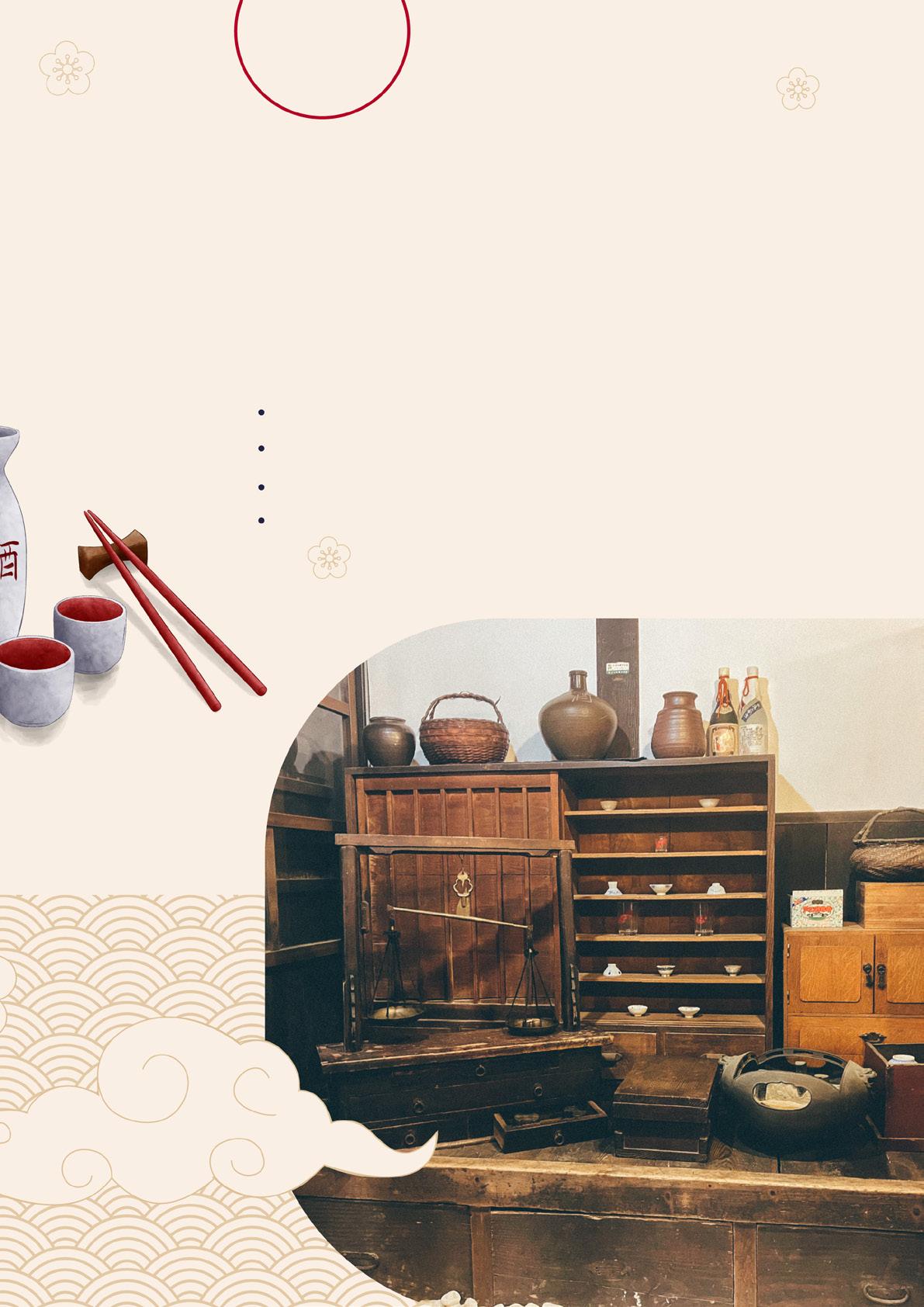


The first Japanese source mentioning nihonshu is also the oldest extant work of literature in Japan: the Kojiki. This 712 CE compendium of Japanese mythology and history contains the story of Yamata no Orochi. Legends have it that after his expulsion from heaven, the storm god Susanoo encounters an earthly couple weeping. Each year the couple has been forced to sacrifice one of their daughters to the monstrous, many-headed serpent Yamata no Orochi. When Susanoo meets the two, they are being made to sacrifice their eighth and final young girl. Susanoo comes up with a plan to defeat the monster by brewing some especially strong nihonshu. He brews and sets out one barrel for each of the monster’s heads. Susanoo was able to defeat the monster, and from its tail he pulled the legendary sword, the Kusanagi-no-Tsurugi. This sword is one of three sacred artefacts of Japan’s Imperial Regalia, used in the enthronement ceremony.
This myth is just one of many that references nihonshu. It also clearly illustrates how central this drink is to Japan’s history and cultural identity, predating many other traditions and artefacts.

First, the rice needs to be processed. After harvesting, the rice is polished (tumbled) to remove the outermost protein coat of the grain. This layer is packed full of minerals and proteins which can muddy or diminish the overall taste. The percentage of the rice grain that is left over determines the type of nihonshu that will be made and the price: The more you polish away, the more rice and time it will take. After at least 70% polish, the rice is steamed and inoculated with a special kind of mould called koji (Aspergillus oryzae). This mould is used in a variety of Japanese foods from soy sauce to beef. The organism takes the complex starches present in rice and breaks them down into sugars. This is the first layer of fermentation. After a couple of days of careful monitoring, you have something called kome-koji.
Brewing nihonshu requires doubleparallel fermentation; but what is that, you ask? Unlike fruits from which wines are made, rice grains do not have much easily available sugars (such as glucose) that can be converted into ethanol by yeast.
Next, the kome-koji is placed in a vat with water and yeast (or kobo). The particular strain of yeast varies between brewers and can be used as a variable to wildly change the flavour. For instance, there is a nihonshu called Shiraso Shuzo that uses yeast from strawberry flowers. The nihonshu does not contain any fruit whatsoever and yet it tastes like strawberries. Once these three core ingredients of kome-koji, water, and kobo are added, the second fermentation begins. The kobo takes the sugars produced by the koji and turns them into alcohol. Over several weeks, nihonshu master brewers called toji carefully monitor the process, controlling the temperature and pressure while sometimes adding more kome-koji, water, or kobo as needed. Finally, the mixture (called moto) is filtered and pasteurized to varying degrees to create nihonshu.
nihonshu.


There are a lot of different types of nihonshu. It honestly can be a bit overwhelming. But for those who want to get started, there are a few basic types that together make up the majority of nihonshu. Broadly speaking, nihonshu can be split into two families. Those made using only kome-koji, water, and kobo are called junmai. This is considered a purer form of nihonshu and is how nihonshu was made all the way up until WWII. The other family consists of non-junmai types. These have varying levels of special brewer's alcohol added to them towards the end of production. Small amounts of brewer's alcohol can be added to highlight more aromatic notes and delicate flavours.
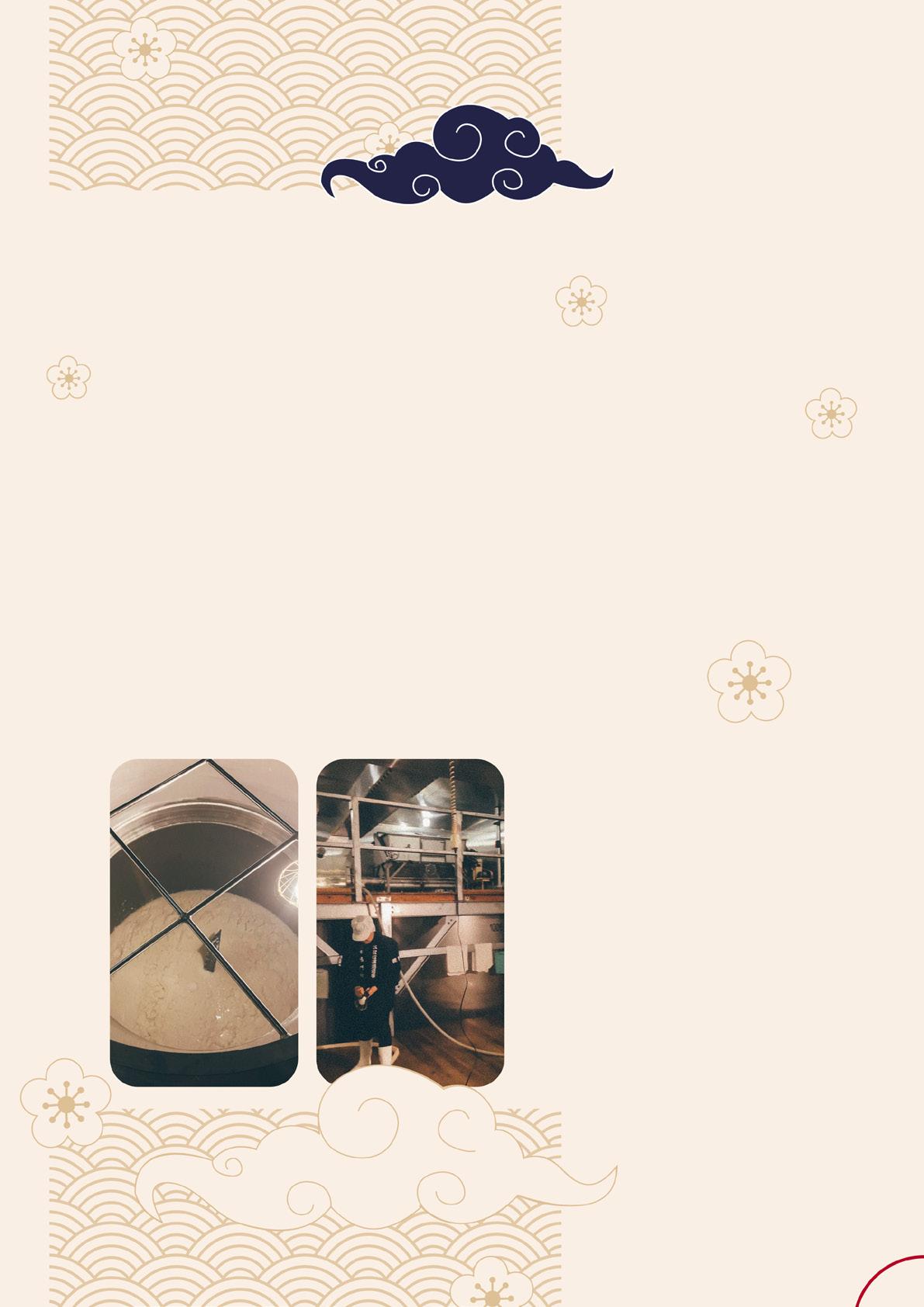
The vast majority of nihonshu produced today (up to 80%) is a lowgrade type called futsuu-shu. These have a larger amount of alcohol added to increase the ABV percentage and to make it cheaper. The ubiquitous “Gekkeikan Sake” that can be found worldwide (and was the only one commonly available) falls into the category of futsuu-shu. For many people this popular green bottle, white label sake is the first nihonshu they ever try. And if you are one of the folks who tried this and decided you hate sake, please try something better. Any nihonshu you buy in Japan will be better than Gekkeikan Sake.
Moving up in quality from futsuushu, nihonshu is typically sorted and classified based on the percentage of rice polish (the percentile number represents the amount of rice left after polishing). A junmai-shu has a 70-61% polish and no alcohol added. A honjozo is the same polish but has a small amount of brewer’s alcohol added to enhance the more complex and even umami notes that can be enjoyed in quality nihonshu.
Ginjo-shu is the word used to describe four different subtypes of nihonshu that all sit at a rice polish of 60% or less. If the word junmai is added at the front, it always means no brewer's alcohol was added. Junmai ginjo-shu and ginjo-shu are between 60% and 51% rice polish.
These kinds tend to be lighter, a little fruitier, and more aromatic. Since more of the outer rice coat has been polished away, it has an overall cleaner taste because there are fewer amino acids and minerals. Junmai daiginjo-shu and daiginjoshu have 50% rice polish or less. The world record holder for lowest rice polish is a nihonshu made in 2018 by Niizawa Shuzo brewery. This remarkable daiginjo has rice polish of just 0.85%. With such a big category there is obviously a wide range of quality and taste but, overall, daiginjo nihonshu is highly aromatic, clear, and clean tasting.
Other notable categories that can be combined with the aforementioned types include namazake, aged, nigori, and sparkling. Typically, nihonshu is pasteurised twice and best served within one year of bottling. However, namazake is only pasteurised once or not at all and can have a delightful zing to it. If you like whiskey but hate the heartburn that comes with strong spirits, give aged nihonshu a try. Like whiskey, namazake is stored in a variety of barrels or even aged sherry casks and has wonderful, complex flavours with lots of tannins. Nigori nihonshu is often referred to as “unfiltered,” but that’s not really true. It is filtered, just less so than most nihonshu, leaving it cloudy in appearance and much sweeter in taste. Nigori is a massive category to explore and can be very easy and enjoyable drinking for those new to nihonshu. Finally, the latest innovation in nihonshu is the introduction of sparkling varieties, going for that champagne feel.

High-end producers strive to make lightly bubbly varieties using natural fermentation without the artificial introduction of gasses, for a very delicate and refined taste experience.


Nihonshu exports reached an alltime high in 2021, with the USA, China, and France all among the top importers. While 15 years ago, one would be hard pressed to find any nihonshu in the local liquor stores in Canada, these days a variety of options are available. As nihonshu’s international popularity increases, brewers
have continued to innovate with new techniques. Yet, remarkably, most producers also continue to use traditional tools and knowledge handed down from masters to apprentices. Nihonshu epitomises Japan’s dedication to preserving its cultural heritage while still driving improvement and innovation forward.


shley Noelck is a second-year ALT located in Tokushima Prefecture. They are an outdoor enthusiast who loves kayaking and camping. Ash loves learning about culture and history, and is slowly teaching themself bass guitar. Their dream is to go on a cross-country motorcycle tour of Japan.
Image Credits
Julie Brousseau

hroughout many centuries and various cultures, flowers have long been symbols of grace and reverence; Japan is no exception. Ikebana (生け花, literally “giving flowers life”) is a practice that has perfectly honed how to accentuate the delicate and mystical beauty of flowers. During my time on the JET Program in my school club, I received an inside look into this ancient art that is still widely practiced across Japan today.
Ikebana as an art form first began more than 500 years ago during the Muromachi period (13921573). Originally called tatebana (立花), these flower arrangements were presented as religious offerings to Shinto gods and deities. The tatebana style was characterized by flowers standing upright and tall, as if reaching to the gods themselves. Later in the Momoyama period (15601600), the offerings became more artistic, complex, and elaborate. Additionally, they gradually decorated not only religious altars, but also the homes of nobility and samurai.
As with many other parts of Japan, during the Meiji period (1868-1912), the art and rules of ikebana changed dramatically. This time saw the development of seika (生花) style, which was made specifically for the tokonoma alcove in Japanese style rooms. Seika is a triangularlooking style, with three main lines representing heaven, human, and earth—all together representing the universe. Especially in the past, when the tokonoma alcove was considered a sacred spot, the positioning of the flowers and the use of empty space were vitally important to the seika style.

 Sophie McCarthy (Hyogo)
Sophie McCarthy (Hyogo)
n part due to the influence of the West, ikebana arrangements began to be placed in non-sacred, open places during the Meiji period as well. This created a need for more dimensional styles. The moribana (盛り花) style takes advantage of 360-degree viewing and focuses more heavily on the materials used in the arrangement themselves. As the name suggests, materials are piled on and rebel against the traditional, structural styles.
Today, countless other forms and variations of ikebana exist. The socio-economic barriers that allowed only the cleric, aristocrat, warrior, and bourgeoisie to enjoy it have fallen, and now anyone from any background can appreciate and try out this popular cultural tradition. There are one-time, weekly, or monthly classes available everywhere in Japan for learning ikebana (often at local community centers), and annual exhibits are held all across Japan where ikebana professionals show off their best work. I highly recommend this one famous ikebana exhibition at the Daimaru in Kobe.

n many Japanese high schools, the ancient practice is kept alive and well in the form of afterschool club activities. During my time on the JET Program, I took part in monthly ikebana meetings with my students. Flowers in tow, a certified ikebana teacher would come to teach us not only about the act of flower arranging, but the world of flowers too. We learned the Japanese (and English) names of flowers, where the species originate, the environments they grow naturally in, and the seasons when they bloom. One of the most interesting species I learned about was nandina (南天) or “Heavenly Bamboo.” Despite its name, it is not actually a bamboo but an evergreen shrub that is native to eastern Asia, from Japan all the way to the Himalayas. Ironically, the berries that grow on the plant in winter are also toxic to animals. The most captivating information I learned, however, was when I realized that this plant had been growing in my own garden for the past few years and until that moment, I never recognized what it was.


apan is a country that has always staunchly embraced seasonal activities and traditions, especially in terms of nature. Established all the way back in the Heian period (794-1185), viewing plants and appreciating flowers was a Japanese aristocratic pastime. Whether hanami (花見, cherry blossom viewing) in the spring or koyo (紅葉, autumn leaves viewing) in the fall, I greatly admire how in tune the Japanese people are with the changes in nature
around them. This appreciation of the seasons extends into the art of ikebana as well. In fall and winter, we would incorporate foliage from those seasons such as chrysanthemums or plum blossoms in our designs. We would utilize flowers such as sunflowers, hydrangeas, or sword-lilies (gladiolus) in the warmer months. I was always impressed by the wide variety of flowers we used over the course of my four years in the club—by the care that was given into ensuring complimentary flowers were chosen for the arrangements.

hile my time with JET and my ikebana club has ended, the fondness I have for this incredibly skilled art form is something I will carry with me for many years to come. Additionally, the knowledge the club bestowed on me about different plants and foliage is something I’m able to use walking outside in my everyday life. Before, I felt somewhat passive passing through nature, feeling like an outsider and not really paying much attention to it. Now, seeing flowers brings me so much joy, and knowing what they are and what they mean to the people here makes me feel like I’m a participant in nature and part of this world. This is, and will remain, one of my fondest memories on the JET Program.

“What is Japanese culture?” isn’t a question that has one simple answer. From anime to bullet trains and city pop music to shrines, all of it is Japanese culture, and every person identifies with different aspects of it. For me though, ikebana was one aspect of Japanese culture that connected to me the most. Ikebana has a rich and storied past with an intimate connection to the natural world.

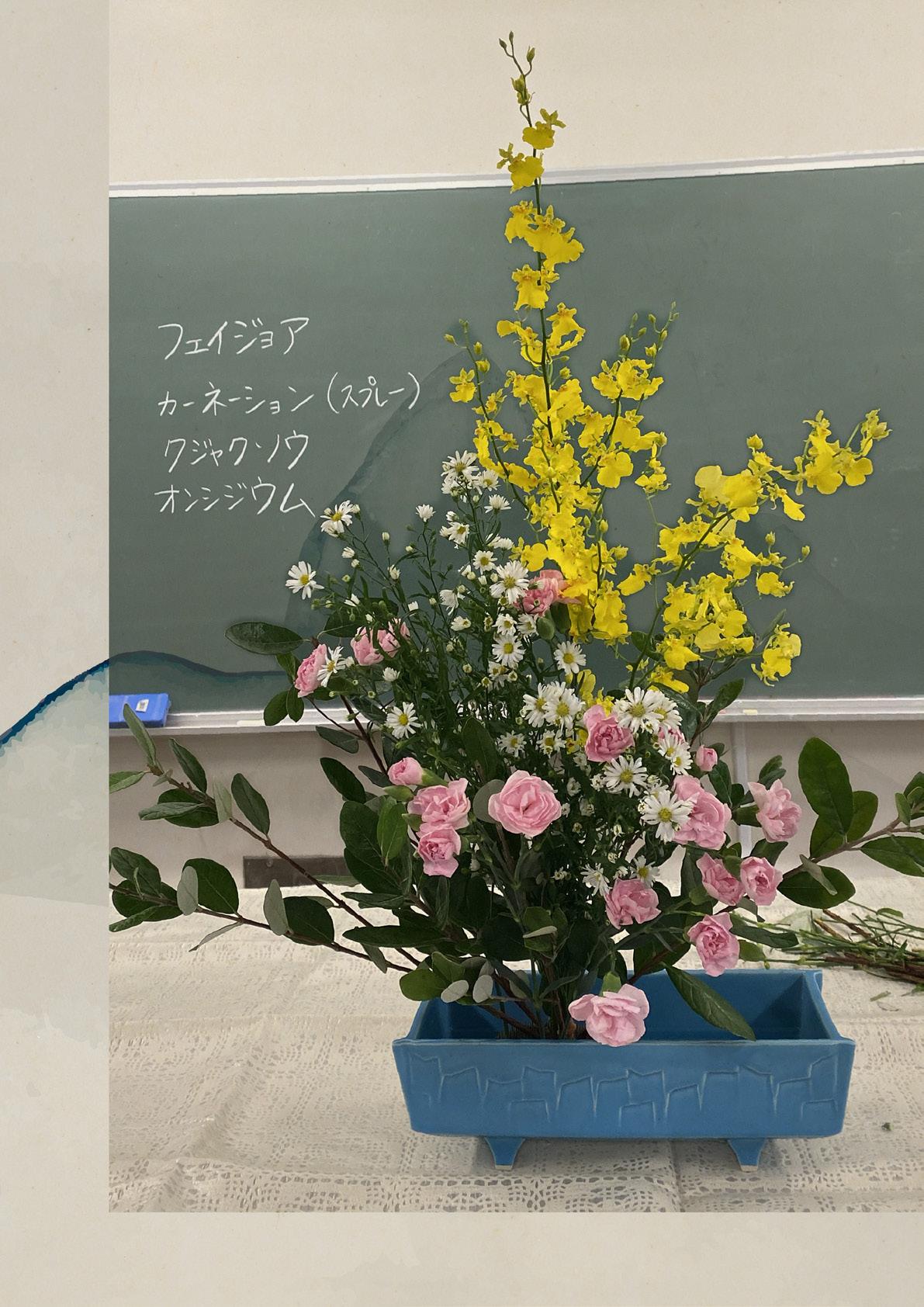
ophie McCarthy was a JET for four years (2018-2022) in Kobe, Hyogo, and now lives in Tokyo. In her free time, she enjoys reading classic literature, visiting coffee shops, and practicing film photography. Check out her photos on Instagram: @filmbysophie
Sources
The Essence of Ikebana by Saga Goryu Ikebana Headquarters
Moribana from Brittanica
Ikebana from JapanObjects


Image Credits
Sophie McCarthy
Vector Credits freepik
WELLNESS EDITOR connect.ajet.health@gmail.com
Alexandra Crombie
“He folded his fear into a perfect rose. He held it out in the palm of his hand. She took it from him and put it in her hair.”
— Arundhati Roy, from The God of Small Things
WELLNESS DESIGNER connect.ajet.visualmedia@gmail.com
Lloyd Cruickshank
“Nuh bite di han weh feed yu”
Translation: Never bite the hands that feed you.
Meaning: Do not be ungrateful to the one who has helped you.
SPORT EDITOR connect.ajet.sports@gmail.com
Andy Hanson
“The one thing that you have that nobody else has is you. Your voice, your mind, your story, your vision. So write and draw and build and play and dance and live as only you can.” — Neil Gaiman
SPORT DESIGNER connect.ajet.assistantdesigner2@gmail.com
Amy Ratcliffe “お疲れ様です”
COPY EDITOR connect.ajet.copy3@gmail.com
Ashley Leung
“It’s a deal. You protect the world. I’ll protect you.” — Xiao Bei, from Better Days
 Photo by Luca Florio | Unsplash.com
Photo by Luca Florio | Unsplash.com

Before coming to Japan I knew that Japan liked baseball . . . and that was about it. I didn’t really associate Japan with much sporting prowess in the games that I was familiar with: American football, rugby, football (soccer, but I’m English so it’s football), and others. Sure, I’d seen the Japanese national teams make some unexpected noise in both football and rugby world cups these last few years, but how much of that was a Cinderella story and how much of it was genuine success?
One of the best things about living in Japan and writing about the sports scene here has been discovering the teams and the dedicated fan bases behind them. Seeing the amount of kids kicking footballs around during the World Cup and how into it they got because of the exposure to the sport they were getting because of their national team’s success, showed how international recognition was impacting Japan.
So it got me thinking: what kind of impact is Japanese talent having on the sports world outside of Japan? Are there players out there changing the way that their sports are played? Or do the best players choose to stay at home because it’s difficult to make the leap into the international leagues? I took four examples of players doing big things outside of Japan to try and illustrate the sporting talent that Japan is exporting to the rest of the world.
Name:
Age:
Prefecture:
Sport:


Hachimura Rui is a Japanese professional basketball player who plays power forward (a position for tall, powerful players who have the versatility to play both an offensive and defensive role) for the Los Angeles Lakers. Hachimura was born in Toyama Prefecture and had success in the sport at a young age, winning the All Japan High School Tournament three years in a row playing for Meisei High School. He’s been playing for the Japanese national team from the under-17 team all the way to today.
The Washington Wizards drafted him 9th in the 2019 National Basketball Association (NBA) Draft following a successful college career with the Gonzaga Bulldogs at Gonzaga University in Washington, making him the second Japanese-born player to ever be drafted in the NBA. In his first season, he made the all-rookie national team and has had an impressive career to date in the NBA.
This culminated early this year; after playing for the Wizards for three seasons, he was traded to the Los Angeles Lakers partway through the current season as part of a trade deal in January 2023. This means he’ll get to take the court every game with basketball legend LeBron James, which must be a dream come true for anyone who aspires to play in the NBA.
Hachimura will be a key piece of the Japanese national team when they head to the FIBA Basketball World Cup this year, which Japan will host in partnership with Indonesia and the Philippines. Before that though, he’ll be helping the Lakers push for a playoff place, and performances like his debut for the team, where he contributed 19 points in a crucial win over the New York Knicks, should help make him a key piece of the team.
It’ll be exciting to see what Hachimura can achieve playing in LA. The only thing that has somewhat held him back so far has been injury, missing 95 games over his first three seasons. If he can stay healthy and stay on the court, who knows, he may be the star of the next Space Jam remake.
Credit: https://www.flickr.com/photos/joeglo/49516402661
Credit: https://commons.wikimedia.org/wiki/File:2019_Rui_Hachimura_dribble_%2848824158846%29_%28cropped%29.jpg
Credit: https://commons.wikimedia.org/wiki/File:Rui_Hachimura_with_Japan_%282018%29.jpg

Name:
Age:
Prefecture:
Sport:
Marou Resuri
27
Mie
American Football
Maruo Resuri (Les Maruo, as he’s known) is a Japanese professional gridiron football linebacker for the Winnipeg Blue Bombers of the Canadian Football League (CFL). The CFL plays second fiddle quite often to the National Football League (NFL) in its cousin to the south, the United States. But the quality of competition there is still higher than most other countries in the world, and once you’re outside of the NFL, it’s probably the next biggest league out there.
Maruo got his opportunity to play at the U.S. collegiate level, having lived in the U.S. from the age of nine. He played for Hutchinson Community College before transferring to the University of Texas at San Antonio. After failing to be drafted by either the NFL or CFL after graduating, Les returned to Japan and played for two years with the X-League side Asahi Soft Drink Challengers before being drafted by the Winnipeg Blue Bombers in 2021 during the CFL’s Global Draft.

After playing a season rotating between the full roster and the practice squad in 2021, Les saw more of a full-time role in 2022, including recording his first career sack (Tackling the quarterback behind the line of scrimmage whilst he’s still holding the ball—a massive deal in the sport.) in the CFL against the Edmonton Elks.
Maruo plays one of the most underappreciated positions in the game, which requires a level of physical strength and agility to not only come down the field and make big tackles but also run with the fastest players on the field to block passing attempts. There’s a level of football knowledge and intelligence required for the position to try to guess what the opposition is about to do and to organise the rest of the players around you in less than a few seconds.
Japan and the CFL have been collaborating closely the past four years, as the CFL has been expanding their international recruitment, holding combines in Japan as a stage for Japanese players to showcase their talent.

As a fan of American football, I’ve been really impressed during my time in Japan by the play I’ve seen when I’ve been able to watch the X-League. The mixture of home-grown talent and American players who have been brought into the teams makes for an interesting level of competition, and it’s encouraging to see players find a way onto a larger stage.
Several Japanese players have come close to playing in the NFL, making their way onto preseason rosters and practice squads where players compete to make the final full-season rosters (teams typically start off the preseason with over 80 players and whittle all the way down to 53 before the season starts), but none have made it to the regular season. If the Japanese players get the kind of exposure that they got this year with the Japan Dream Bowl against the American Ivy League All-Star team, it could open up doors for more players to make their way across the Pacific to the college leagues and beyond.
Name:
Age:
Prefecture:
Sport:
28
Nara
Celtic Football Club is a soccer team (here on out referred to as football) of the Scottish Premier League, which could almost have an entire article about itself. That article could be written just about the Celtic manager, Ange Postecoglou, who came to the Scottish team from managing J1 League side Yokohama F. Marinos for three years, winning the J1 League in 2019. The team currently has five Japanese national players on their squad: Maeda Daizen, Hatate Reo, Furuhashi Kyogo, Iwata Tomoki, Ideguchi Yosuke (currently on loan back to Avispa Fukuoka), and Kobayashi Yuki.
The star of the group, though, is Furuhashi Kyogo, and not just because he’s from my home prefecture of Nara. Kyogo, as he’s known, started his professional career at J2 League Club FC Gifu for a year as a forward (the sexy player on the team who gets to score all the goals) before moving on to the J1 League Vissel Kobe in Hyogo Prefecture, where he played for three years, scoring 42 goals in 95 appearances.
In 2021, Kyogo signed a four-year deal to join the Scottish Premiership club, Celtic FC, and this is where he truly broke out. He made his debut in August 2021 in an Europa Cup qualifying game and scored on his first outing. Only a few days later, he made his Scottish League debut and instantly became a fan favourite, netting a hat-trick (three goals) in his first game in Celtic Park. As of the time of writing, Kyogo is the league’s leading scorer for the current Scottish Premier League year.
If you go onto Twitter and search #Kyogoal, you’ll quickly find yourself on the Celtic or Celtic Japan Twitter pages and get treated to highlights of what Kyogo has been doing this season. From the activity on the Celtic Japan Twitter page, it seems that Japan has embraced Celtic in the way Celtic has embraced its Japanese star player.
To date, Kyogo has scored 32 goals in 45 Scottish League games and another 13 in other competitions for the club. Many were shocked when he was left out of the Japanese national team for the Qatar World Cup in 2022. When asked about the decision to exclude Kyoyo and fellow Celtic player Hatate Reo, the Japan national team coach, Moriyasu Hajime, didn’t really clear anything up:
”We selected players who will be on the same wavelength as a team, who will be able to move and link up together, who through their organisation will be able to make use of their individual strengths.”
The reason is likely to do with the fact that Kyogo’s club performance hasn’t always translated on the national stage. He’s scored only three goals in 16 appearances for his country, and two of those came in a 14-goal rout of Mongolia in their World Cup qualifier game.
Celtic’s embrace of football talent coming out of Japan is in no small part due to the Japan national team’s success, and other players such Minamino Takumi have found success further south in the United Kingdom in the English Premier League and in European football. Celtic’s particular situation owes a lot to Ange’s time in Japan and his unique window into the football talent there. Asked about his signings when several players were signed in early 2022, Ange responded:
“The reason I went down that road is, one, I have great knowledge of that market in that part of the world because that is where I have worked, and two, it is ideal for the January market because their season finishes in December. If we wanted to get players in early in the January window, that is a good part of the world to do business. Don’t just assume we’ve brought in four Japanese players, we have brought in four quality players, all very different, who can all contribute.”
If Japan’s success on the national stage continues, and the moves that Ange and other managers have made in bringing talented Japanese players onto the biggest stages of the football scene, it could see more players be given the same opportunity.
Name:
Age:
Prefecture:
Sport:
Otani Shohei
28
Iwate Baseball
It’s hard to write about sports in Japan without mentioning baseball. Outside of the United States, Japan has one of the biggest baseball followings in the world with an estimated 20% of the population following the sport.
There are eight Japanese-born players active in Major League Baseball (MLB), the U.S. premier baseball league, and likely the most well known to fans of the sport is Otani Shohei of the Los Angeles Angels. His nickname “Shotime” should tell you everything you need to know about how he’s viewed in the game. Prior to joining the Angels, Otani played for the Nippon-Ham Fighters in Hokkaido aged just 18, all the way back in 2013.

https://www.flickr.com/photos/192355779@N02/51004262543
https://commons.wikimedia.org/wiki/File:Shohei_Ohtani_on_July_8,_2022_%281%29.jpg

Otani is a pitcher (the one who throws the ball), which is solidly the most important position on a baseball team; it’s not quite as imbalanced as the importance of the quarterback in American football, but the importance of having a talented pitcher still shouldn’t be understated. On top of that, he is also a talented batsman, being used throughout his career as a serious threat in both phases of the game.
He made his debut with the Angels in December of 2017 and started his first game for the team on March 29, 2018. By April 3, he’d made his pitching debut and hit his first home run in the MLB. That wouldn’t have been a shock for anyone who’d followed his career in Japan where he was dominant at the club and national levels both on the mound (the little hill of dirt where pitches are thrown from) and at bat. By the end of his first season, he’d been named the American League Rookie of the Year.

It shouldn’t be underplayed what a rare player Otani really is. In 2021, he started a game at pitcher whilst also being the league leader in home runs, something which hadn’t happened in over 100 years since baseball legend Babe Ruth last did so. Otani kept breaking records through 2021, which led to him being named the obvious winner of the American League Most Valuable Player award.
His 2021 season was so iconic it made two separate entries into the Guinness Book of Records, which was celebrated in his home country with the lighting of Tokyo Tower
Otani will likely go on to break many more records and set the standard for the sport for quite some time. The MLB actually changed a rule in 2022 (now named the Otani Rule), essentially allowing him to bat after pitching without needing to spend time in the outfield. Taking full advantage of this, he set the standard for several records again in the season.
The mark that he has made on MLB will ensure that when people around the world think of baseball, they will think about Japan in one way or another. The popularity of the sport in Japan, though, will mean that although some players will be tempted away to join the lights of the MLB, there is a place for home-grown talent at home as well.
Andy spends most of his time worried about the future of the New Jets football team. He has a family around here somewhere and can often be found hunched over painting small plastic figures. Iced coffee is his favourite thing about Japan.
Vector Images: Freepik.com
My friends probably think I’m being hideously hypocritical writing this article. I am not known for my financial literacy, but hopefully my ineptitude will make these tips that actually worked for me all the more helpful for you.
My job as an ALT in Japan is my first full-time, salaried position. I have worked in various different part-time roles since I was a teenager, but this is the first time I am able to plan ahead with some sense of financial stability.
My first and most important piece of advice is: don’t be too hard on yourself. Everybody’s situation is different, and what is possible for some will not be possible or realistic for others. These are some tips that have recently served me well.
Alexandra CrombieAiming to save too large a portion of your income will likely lead to failure and guilt. I had grand plans for the savings I would make on JET, forgetting that I actually might want to enjoy my time here by living, breathing, and traveling.

When deciding on this realistic target, take into consideration any responsibilities back home. For example, I have to send money back each month to pay off student debt.
Alongside setting a target amount to save, set an amount you are allowed to spend. If you want to buy an expensive item, wait until payday is closer and make small cutbacks on other things in the run up so that the purchase feels more like a reward. I personally find it easier to restrict my spending when I know exactly what I want to use the money for later on.
In addition to establishing a target amount to save and spend, I would recommend leaving a cushion. You may think it’s pointless now, but when your car needs new tires or your only pair of smart shoes break, you will thank yourself. This is why it is so important to be realistic. It allows you to prepare better for unexpected costs.
Adhere to the overnight rule. If you see something you want but don’t absolutely need, give yourself 24 hours to mull it over. If you still want the item the next day, go for it. This has saved me from many questionable purchases.

A great alternative to splashing on meals out is hosting a dinner party in your apartment. You could even ask everyone to bring a selection of conbini food to share, which splits the cost between everybody.
Also, prepare your weekday lunches on the weekend. This is great advice that I personally find extremely hard to follow or maintain. If you manage it, good for you. If not, don’t feel guilty, life is busy.
Let your friends know you are trying to stick to a budget. Hopefully they will respect this and try to accommodate it where they can.
Most importantly, take care of yourself. Money worries are particularly malignant and can really influence how you feel on a day-to-day basis. Please talk to someone if you are struggling because there is often some sort of help available, in the form of financial assistance or mental health support.
Alexandra Crombie is a first-year JET living in Gunma prefecture. Her favourite colour is a dark, muted blue, and she likes to spend her free time camping or exploring with friends. She also enjoys watching copious numbers of films.

LANGUAGE EDITOR connect.ajet.language@gmail.com
Pitta-Gay Powell
“Nobody wins an argument.” — Dale Carnegie, from How to Win Friends and Influence People
LANGUAGE DESIGNER connect.ajet.assistantvm@gmail.com

Emily Griffith
“There’s no such thing as bad weather –only the wrong clothes.” — Billy Connolly
COPY EDITOR connect.ajet.copy2@gmail.com
Sage Olges
“No offense, Dewey, I have no intention of ever setting foot in that town again.”
— Sidney Prescott, from Scream (2022)
Photo by Tunafish | Unsplash.com
For many of us living in Japan, learning Japanese is essential for getting by in our daily lives, work, and just about everything around us. Although everyone has different challenges they must overcome when studying the language, one common aspect many learners struggle to grasp is Japanese grammar.
With several ways of conveying one general idea, it can be difficult for learners like me to memorize every possible method of expressing one’s thoughts in Japanese. To ease the difficulty, one online program with its mobile app available for iOS and Android called Bunpro helps Japanese learners pick up more grammar points than they could from a single grammar book or language class.
After I started using this app about three months ago, my Japanese comprehension has significantly improved. The program utilizes a popular learning method called
the spaced-repetition system (SRS) to challenge learners to remember content whenever they randomly encounter it. For example, the app will frequently expose users to newer Japanese grammar they started learning after they look through each grammar point’s page. As the learner gains more familiarity with a concept, the app will challenge the user about that grammar point less frequently to check if they fully understand how to use it whenever.
For users who want to consider using Bunpro, the app categorizes all grammar points under which Japanese Language Proficiency Test (JLPT) level they may most likely appear. From N5 (beginner) to N1 (advanced), users can start completing grammar from any level they wish, and they can change which level they want to tackle at any point. Learners can also adjust how many grammar points they study before the app quizzes them on what they learned.
Veronica Nielsen (Hiroshima)The program utilizes a popular learning method called the spaced-repetition system (SRS) to challenge learners to remember content whenever they randomly encounter it.

I love that Bunpro has many details about Japanese grammar concepts. One grammar point’s page has beneficial informationabouthowtouseit,howoften Japanese speakers may encounter it, and realistic example sentences that help learners sound more natural when using thepoint.Oneofmybiggestproblemswith manyJapanesegrammarresourcesisthat they don’t often discuss when learners mayencounterorusethegrammarinreallifesituations.Forinstance,ifIhadlearned earlier on in my studies that ga hayai ka (as soon as) appears more frequently in written versus spoken Japanese, I would havesavedmyselffromsomeawkwardbut hilarious interactions I have had with my Japanesefriends.
Also, Bunpro has a “cram” function that allowsuserstoreviewpreviouslyreviewed or all grammar concepts. Out of all the features available on this app, this is the most useful for me in reviewing Japanese grammar. Users can select whether they wish to study all grammar on the app; review all grammar under one difficulty level; cover learned grammar; or study grammar points the app thinks the user mayhavemoredifficultygrasping.
Users can choose to fillin the blanks with the correct Japanese grammar, complete reading practice, or grade their comprehension level with listening practice.Frequentlyreviewingisnecessary for those aiming to take exams likethe JLPT to measure their Japanese reading andlistening comprehension at apredetermined level. It is also helpful
for understanding Japanese grammar that speakers can use in their speech and writing to improve their communicationquality.
While Bunpro offers Japanese language learners helpful grammar content, one potential downside to various users is how the app is not forgivingforthosewhomaketyposwhen entering their responses. Given how numerous grammar points like tokoro de (by the way) and tokoro da (placeor situation)resembleeachotherinspeech and writing, it is easy for learners to confuse their meanings and usages. Because of that, users must acknowledge that this app challenges them to learn and type Japanese grammar as accurately aspossible.
One other downside that Bunpro mayhave for some users is the timing of its spaced-repetition system. Some reviews for previously learned content take longer to appear than others. Depending on how many grammar points a user must review at one moment, some grammar points they learned may not appear for a while. Thisdelay can make it easy for users to forget the grammar they covered if they don’t take advantage of the "cram" function. Because of that, I highly recommend Japanese learners who want to use Bunpro to utilize the "cram" option whenever they study. Otherwise, it can be too easy to forget thatthey already reviewed a grammar pointearlier.






Overall, the Bunpro app and website provide Japanese learners with plenty of content to help them understand Japanese grammar. Each example sentence comes with an English translation, and many include audio provided by a native speaker to improve listening comprehension. Shadowing has improved my Japanese speaking ability considerably. For anyone who studies independently, shadowing is a helpful strategy to repeat what the native speaker says to develop your ability to speak as articulately and quickly as they do. In this case, shadowing will help you use the Japanese grammar you learn so you can apply it to your interactions with Japanese speakers and your understanding of Japanese culture and media.
Overall, the Bunpro app and website provide Japanese learners with plenty of content to help them understand Japanese grammar. Each example sentence comes with an English translation, and many include audio provided by a native speaker to improve listening comprehension. Shadowing has improved my Japanese speaking ability considerably. For anyone who studies independently, shadowing is a helpful strategy to repeat what the native speaker says to develop your ability to speak as articulately and quickly as they do. In this case, shadowing will help you use the Japanese grammar you learn so you can apply it to your interactions with Japanese speakers and your understanding of Japanese culture and media.

















Veronica Nielsen is a first-year Coordinator for International Relations (CIR) on the JET Programme living in Hiroshima Prefecture. She has traveled to many prefectures in Japan and aims to visit Shikoku, Kyushu, and Okinawa—three areas she has yet to see.
Veronica Nielsen is a first-year Coordinator for International Relations (CIR) on the JET Programme living in Hiroshima Prefecture. She has traveled to many prefectures in Japan and aims to visit Shikoku, Kyushu, and Okinawa—three areas she has yet to see.



 Graphic by Chalermsuk Bootvises | Vecteezy.com
Graphic by Chalermsuk Bootvises | Vecteezy.com

Throughout my time as an Assistant Language Teacher (ALT), there have been certain patterns that I have seen repeated ad nauseam. These patterns even bled into various aspects of English as a second language (ESL) acquisition. From my observation, students’ heavy reliance on Katakana Eigo is responsible for theissue.
Learning a new language can definitely be quite daunting. However, diving into a new language with an entirely new writing system and more phonetic nuances is an entirely different ball game altogether,hence students use katakana to bring some calm to the chaos. However, an over-reliance on "Katakana Eigo" can only be beneficial until a certain point before other aspects of language acquisition, retention, and reproduction are adversely affected. For example,Ihave seen my fair share of misspellings all stemming from students internalising English solely through Katakana Eigo, confusingthemselvesintheprocess.
Christian Jalim (Ehime)As a way to break the pattern, I introduce to you, using minimal pairs as a method to improve students language ability.
Firstly, let us examine what minimal pairs are.
Speech pathologist Jane Rosenlund described minimal pairs as a “focus on the contrasting difference between phonemes.” It is a tool used by speech pathologists during speech therapy with children enduring speech sound disorders. Due to the structure of the Japanese language, students are not exposed to certain sounds produced in English phonics so by using katakana, many pairs of words sound the same when the reality is, even to the untrained native English speaker’s ear, there is quite a noticeable difference. Some common examples are:
first/fast, but/bat, hurt/heart, lake/ rake,sheet/seat,vet/bet, andmanymore.
If you place any of the aforementioned pairsinfrontofaJapanesestudentwhois extremelyreliantonkatakanaandaskthem topronounceeachwordinthepair,youwill startnoticingthetargetareasthatneedto beaddressed.
As an ALT, moreover a native speaker, this is where we come into play and are monumental in facilitating English education. We can offer our expertise of knowing the nuances of phonetics and therefore scaffold and train students to understandsaidnuancesofpronunciation.
For myself, I use a two-fold approach to utilising minimal pairs during my lessons. Over two sessions, I focus on only one minimal pair for about 5 to 10 minutes each session. In the first session, I show the students the pair of words and do some practice and repetition. After the introductory phase, I do five rounds of listeninginwhichIrandomlysayoneword from the pair. During this time, students listen to the pronunciation from me, a nativeEnglishspeaker,andraisetheirhand correspondingtothewordinfrontofthem. If they think I said the wordthat is to their right,theyraisetheirrighthand.Iftheythink Isaidthewordthatistotheirleft,theyraise their left hand. Sometimes I say the same word consecutively because students will often expect you to say the other word in thenextround.
If after five rounds of listening, you notice that the majority of students still have problemswithlisteningandunderstanding the differences between the sounds and words,dosomemorepracticeandextend the number of sessions. Then, rinse and repeatforthenextclasssession.

If your students have no problem, however, the next session is all about them. With the help of my JTE, we have the students each say the pair one at a time. My small schools definitely have the advantage of that individual attention. Based on how accurately and clearly they were able to pronounce each word distinctively, they would be evaluated and given comments. It is a great opportunity for students to gain a deeper understanding of speech and sounds. Minimal pair practice is an important part of helping students understand phonics, and how sounds in English work.
As for how to manage the difficulty as per the grade level, for elementary school, start with simple pairs like: bet/vet, right/ light. As you go into higher grades, slowly introduce slightly more difficult pairs such as; hurt/heart, trouble/travel, letters/ lettuce, volley/ballet.
So having established the what and how, let us examine the why by looking at the domino effect aims of this activity.
Firstly, exposing students to the nuances of phonetics in English helps sharpen their pronunciation and listening skills. By showing and teaching these nuances, students can understand the workings of phonics and make correct associations of sound with speech.
Through this level of understanding of the language, we can attain a second goal where students can slowly reduce their dependence on katakana as they learn to navigate the intricacies of English phonics.
Students are now expected to have unfaltering confidence in their potential to speak and internalise English words without relying too heavily on katakana as a guide. They are expected to improve their pronunciation and confidence in speaking English words by just reading and not resorting to something that simply feels familiar and comfortable. However, in the long-term, these high expectations can be detrimental to their actual language skill development.
This leads to the third goal of using minimal pairs. When students reduce their dependence on katakana to help them understand the phonetic workings of English, it is expected that they slowly associate sounds with spelling. As they gradually wean off their first language pronunciation dependence, they develop proper word-sound association and become more proficient in their second language retention and reproduction.

Having illustrated the value and process of using minimal pairs, I hope that other teachers or assistant teachers of English will also try to employ minimal pairs as a practice in their lessons to help advance students’ competency in spoken English. In closing, I would like to suggest that as English instructors existing in Japanese spaces, English spoken by Japanese people should be carefully observed and used for minimal pairing. This would bring relevance and cultural appropriateness to the English lesson and help improve students skills in word-discernment and fluency.
Chris(tian) Jalim hails from the sunny isles of Trinidad and Tobago in the Caribbean paradise. He majored in International Relations and Global Studies and has completed three levels of Japanese Proficiency Tests. In his free time, he enjoys many things including, but not limited to, language learning, cooking, video games, cosplay, anime, and documentaries about space or ancient civilisations.

TRAVEL EDITOR connect.ajet.travel@gmail.com
Chloe Holm
“The life you have led doesn’t need to be the only life you have.” — Anna Quindlen
TRAVEL DESIGNER connect.ajet.assistantvm@gmail.com
Emily Griffith
“There’s no such thing as bad weather –only the wrong clothes.” — Billy Connolly
COMMUNITY EDITOR connect.ajet.community@gmail.com
Ryon Morrin
“Pui Pui.” — Potato, from Pui Pui Molcar
COMMUNITY DESIGNER connect.ajet.assistantdesigner2@gmail.com
Amy Ratcliffe “お疲れ様です”
COPY EDITOR connect.ajet.copy4@gmail.com
Jon Solmundson
“Body in abyss, heart in paradise.” — Xie Lian in MXTX’s Heaven Official’s Blessing, but also me after visiting a buffet restaurant with an ice cream bar.
Photo by Jonah Elkowitz | Unsplash.com

 Mark Christensen (Fukuoka)
Mark Christensen (Fukuoka)
With the warm sun beginning to wrestle nature out of winter’s grasp, the first signs of spring have arrived in Japan. In the milder weather of the south, the Island of Kyushu is host to a number of early floral blooms.
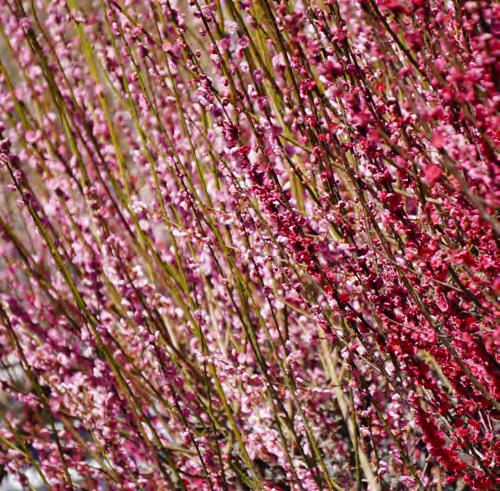


In the old mining town of Omuta, deep in southern Fukuoka, lies the quiet Fukoji temple. Off the tracks and nestled on Mt. Miike, which overlooks the city, it is very easy for the casual visitor to miss. But it holds some fascinating secrets.
According to legend, the mountain was once the site of a very unusual battle. When a princess was attacked by a terrible serpent, a humble river crab came to her rescue, heroically clipping the mighty serpent into pieces, forming Mt. Miike’s three ponds. Today, Mt. Miike shows blood red every spring, but for a very different reason: plum trees!
Unlike the more famous sakura (cherry blossoms), plum trees bloom as much as a month earlier and come in a wide variety, including crimson, pink, pink-white, and yellow-white. They also have a beautiful fragrance, which could be compared to honey with hints of fruit.
Fukoji Temple holds a dense grove of these flowering trees, which is a popular site for locals. It’s also a great spot to view mejiro. Also known as the Warbling White Eye, these beautiful green birds love to feed on the flowers.
















Further to the north, Fukuoka also holds one of the most famous places to view plum blossoms: DazaifuTenmangu.
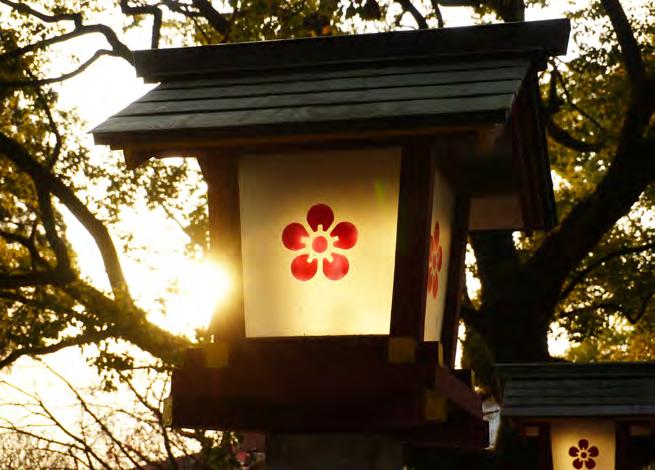


In the past, a brilliant Heian-era scholar and diplomat named Sugawara no Michizane fell afoul of court politics and was banished to Fukuoka. When he died in exile, misfortune and lightning strikes assailed his opponents, earning the fear of the court, and he was eventually deified as Tenjin, a god of storms. Nowadays, he is considered the patron god of learning and is popularly worshipped at his shrine by students seeking to pass theirfinalexams.
Curiously, Tenjin was deeply fond of plum blossoms. It was said that his love of plums was so great that one of his favorite trees in Kyoto actually uprooted itself and flew to Dazaifu, where it is now honored as “Tobi-Ume,” the flying plum tree, which flowers white every spring. The tree is so famous, in fact, that it actually has a notable cameo in the popularanimeBleach!
Today, plum trees are a key part of Dazaifu’s identity. The shrine itself uses a plum symbol, and popular snacks like Umegae Mochi feature these blossoms. The groundsthemselves, fittingly, are covered in numerous plum trees, with even more in the nearby courtyards,aroundtheponds, and a large grove behind the main sanctum. It’s an excellent place to enjoy one of spring’s brightest flowers!






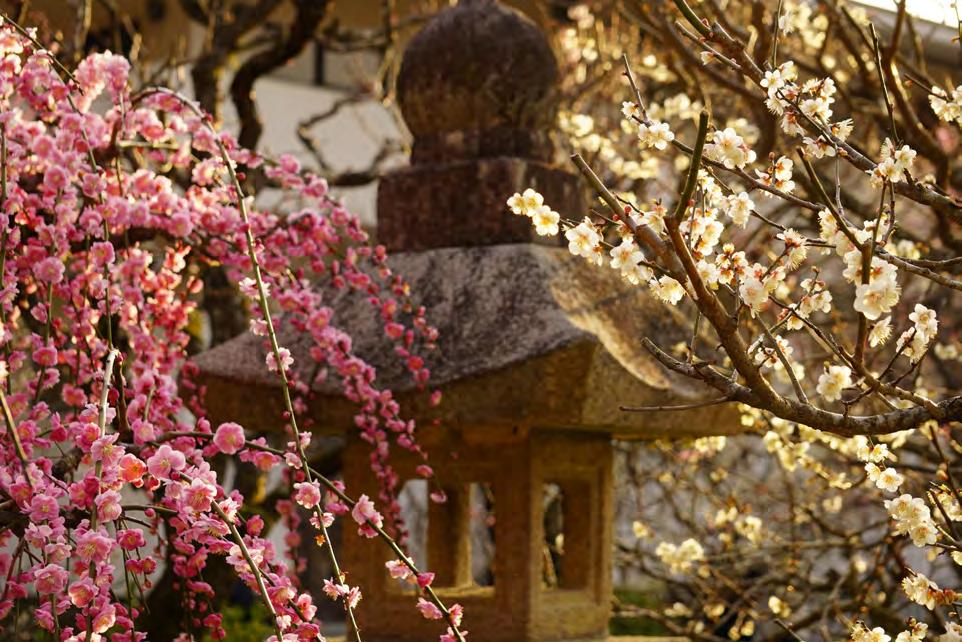




As spring progresses, Japan’s most famous flower, the sakura, begins its northern journey.

In Fukuoka, some excellent spots to see sakura are at Nishi and Maizuru Park, which are in very close proximity to each other.


Maizuru park is located on the grounds and ruins of the old Fukuoka Castle. While the castle has been largely lost to time, the old stone bases of the castle can still be seen. Today, they are surrounded by a beautiful park that hosts a large number of cherry trees. During the last weeks of March and the first week of April, it’s a popular site for large hanami parties and festivities, as well as many vendors.
For those that favor a quieter experience, nearby Nishi Park is another great option. Located on a hill near Maizuru, Nishi Park’s approach is a gently sloped road that transforms into a shrine entrance lined with beautiful pink-white sakura. Here, visitors can experience Terumo Shrine.
Further in the park, there are quiet paths and glades where people can walk through and view the sakura, or rest under the trees in quiet small terraced pockets avoiding the large crowds of Maizuru. Although, perhaps the best spot is the overlook of the harbor, which has a stunning view of Hakata Bay and Nokonoshima Island.




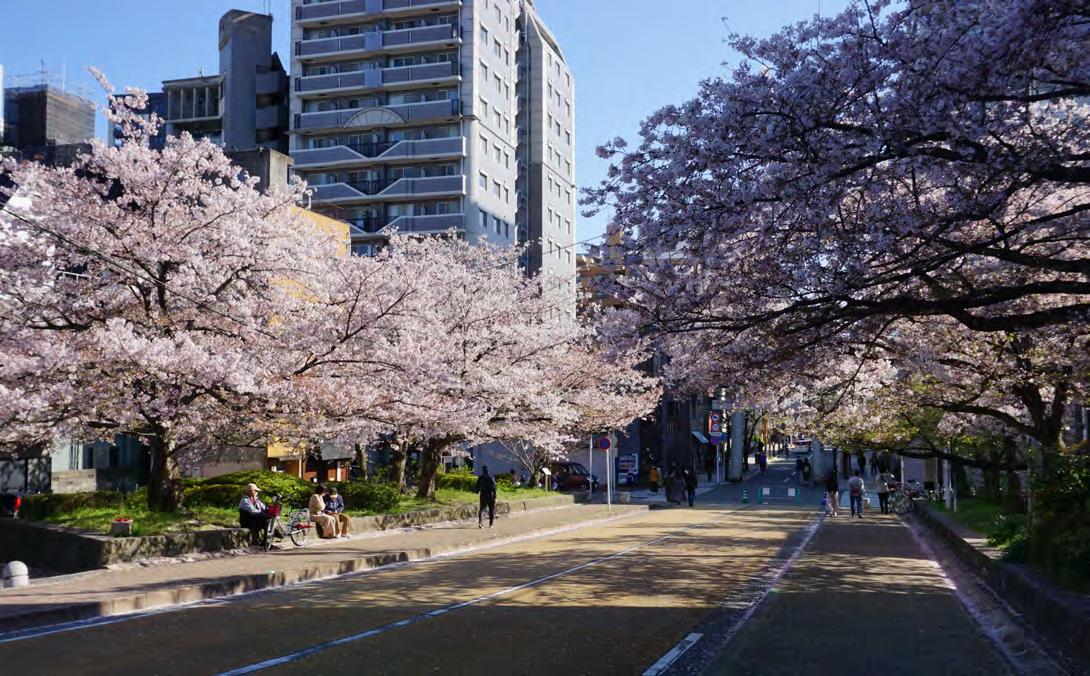
Outside of Fukuoka, there are a number of other great places to experience flowers in southern Japan. Near the city of Hiroshima, the sacred Island of Miyajima is a wonderful place for viewing Japanese nature. While most known for its beautiful maple leaves and giant Torii gate, the island’s sakura flowers are quite impressive. They offer many unique spots for scenic photography, ranging from streets with rustic shops to the island’s numerous temples and shrines.
One great example of this is the Island’s Tahoto Pagoda. Surrounded by pink cherries, the darker greens of the nearby forest, and the occasional hazy mist, the pagoda looks like a place straight out of an ancient painting. And it’s hardly alone. Torin, a small park tucked away behind the pagoda, has its own unique flavor. Situated in a terraced bowl on a hillside, the dense cluster of cherry trees at its heart create a beautiful canopy and a unique glow in the evening.


Leading toward Mt. Misen, one of the nearby trails has another unique take on sakura blossoms. In the evening gloom, the local residents light up red and pink lanterns, which hang under the cherry trees. This gives the area a warm, ethereal pink glow, under which the island’s deer gently browse the fallen blossoms.








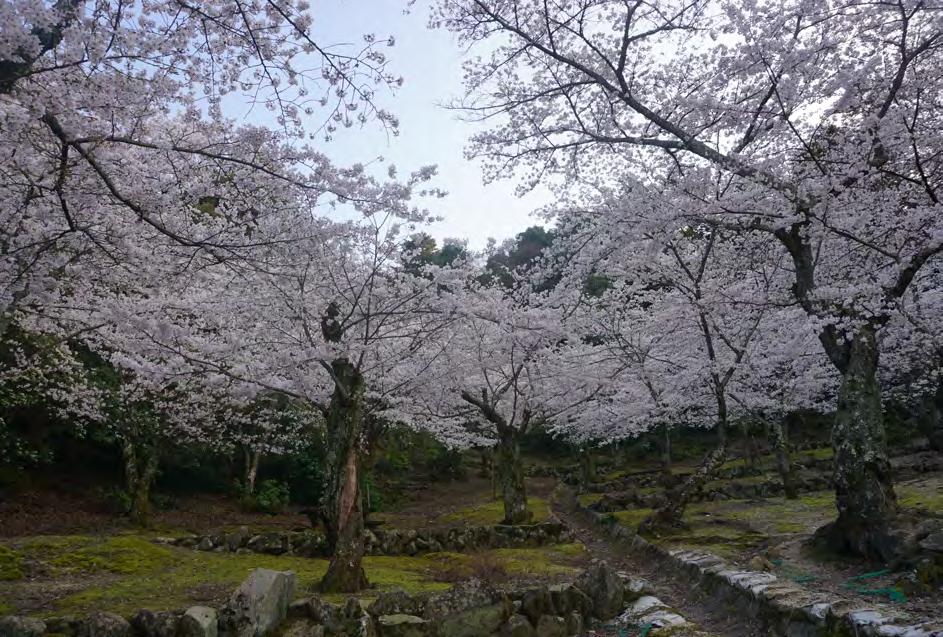




As one of Japan’s most iconic cities, it should come as no surprise that Kyoto is a popular place for cherry blossoms. The city’s old buildings and roads offer a truly unique sakura viewing experience. One great spot is located near the northwestern side of the city near Ginkakuji, the Silver Pavilion. Tetsugaku no Michi, “the Philosopher’s Path,” is a scenic stone canal covered by countless cherry trees that was once favored by the famous thinker Kitaro Nishida, who would frequently enjoy the soothing peace of the trail. In cherry season, one can see why he loved the peaceful road, which is carpeted in pink petals.

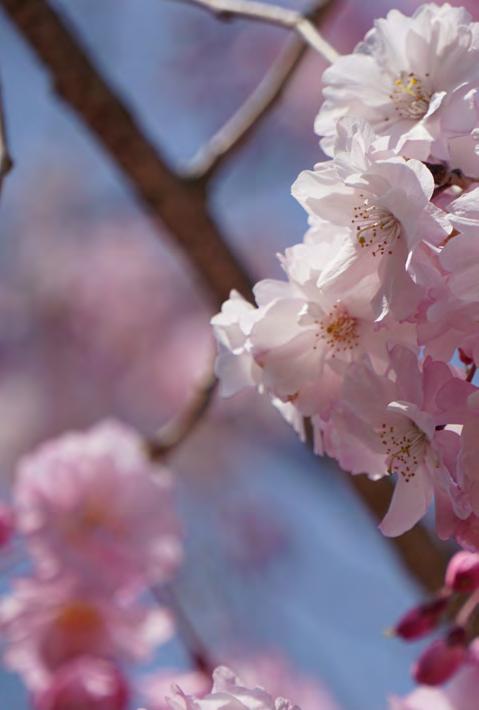

Toward the center of the city, Toji Pagoda towers over Kyoto, as one of the oldest wooden structures in Japan. During spring nights, the grounds of the temple are awash with the glow of weeping cherries as they are underlit by brilliant light. The pink glow and bright outline of the tower, especially paired with the mirror-like quality of the compound’s many ponds, gives rise to a very unusual night experience for viewing cherries.
Perhaps the city’s grandest spot is the cherry grove in the heart of Maruyama Park. Located next to Yasaka Shrine and the old sections of Gion, the park hosts a number of cherry trees and beautiful ponds. The real attraction of the park, however, is the massive weeping cherry tree that towers a whopping 12 meters over visitors. At night, the tree is illuminated during the special Gion no Yozakura event.




Background by wisnu pramono jati | vecteezy.com
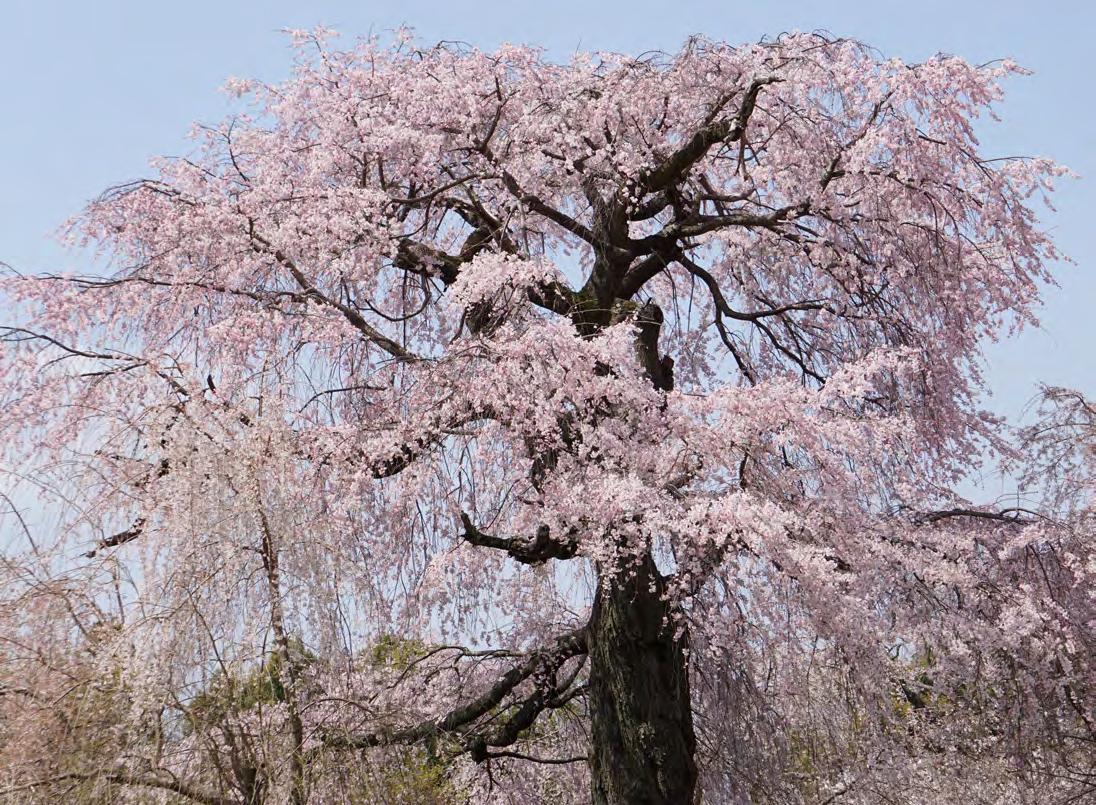
Graphics by elsabenaa620570 | vecteezy.com




Mark Christensen is a fourth-year ALT from Snohomish, Washington, USA. An avid photographer, he has a strong passion for mountaineering and capturing the beauty of Japan’s natural sites. His other hobby is volunteering as a Stormtrooper with the 501st Legion. He currently resides in Omuta, Fukuoka.
As you can see, Japan offers many different ways to enjoy the end of winter and beginning of spring. From major cities to smaller towns, cherry blossoms to plum trees, there’s no end of viewing options.
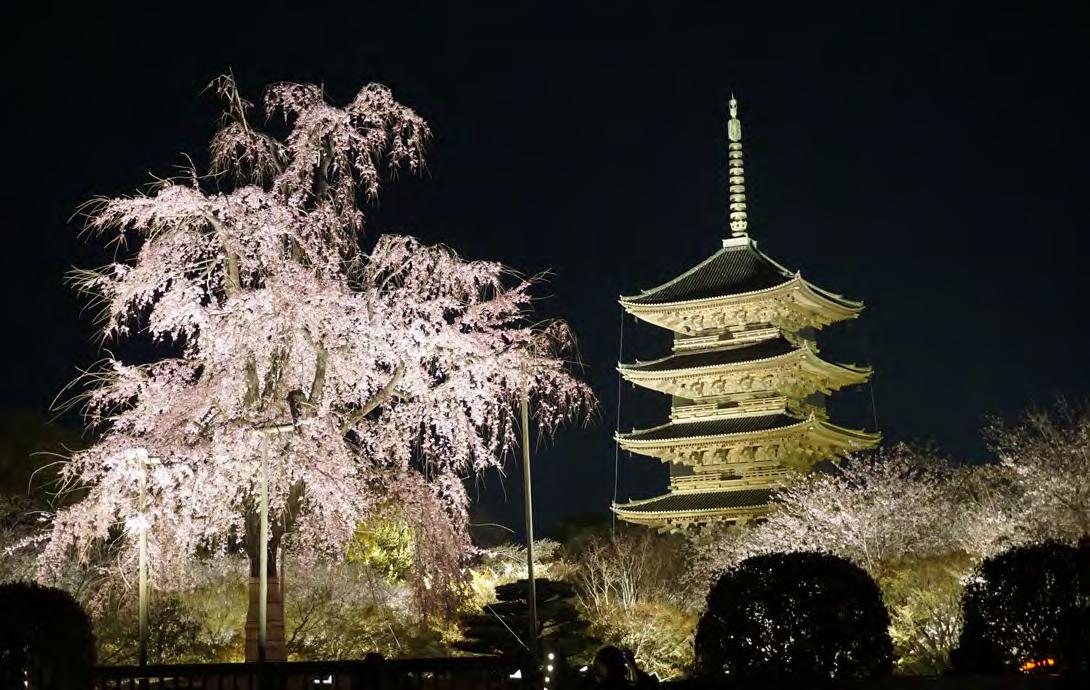

Why don’t you try to seek out the flowers of the south?


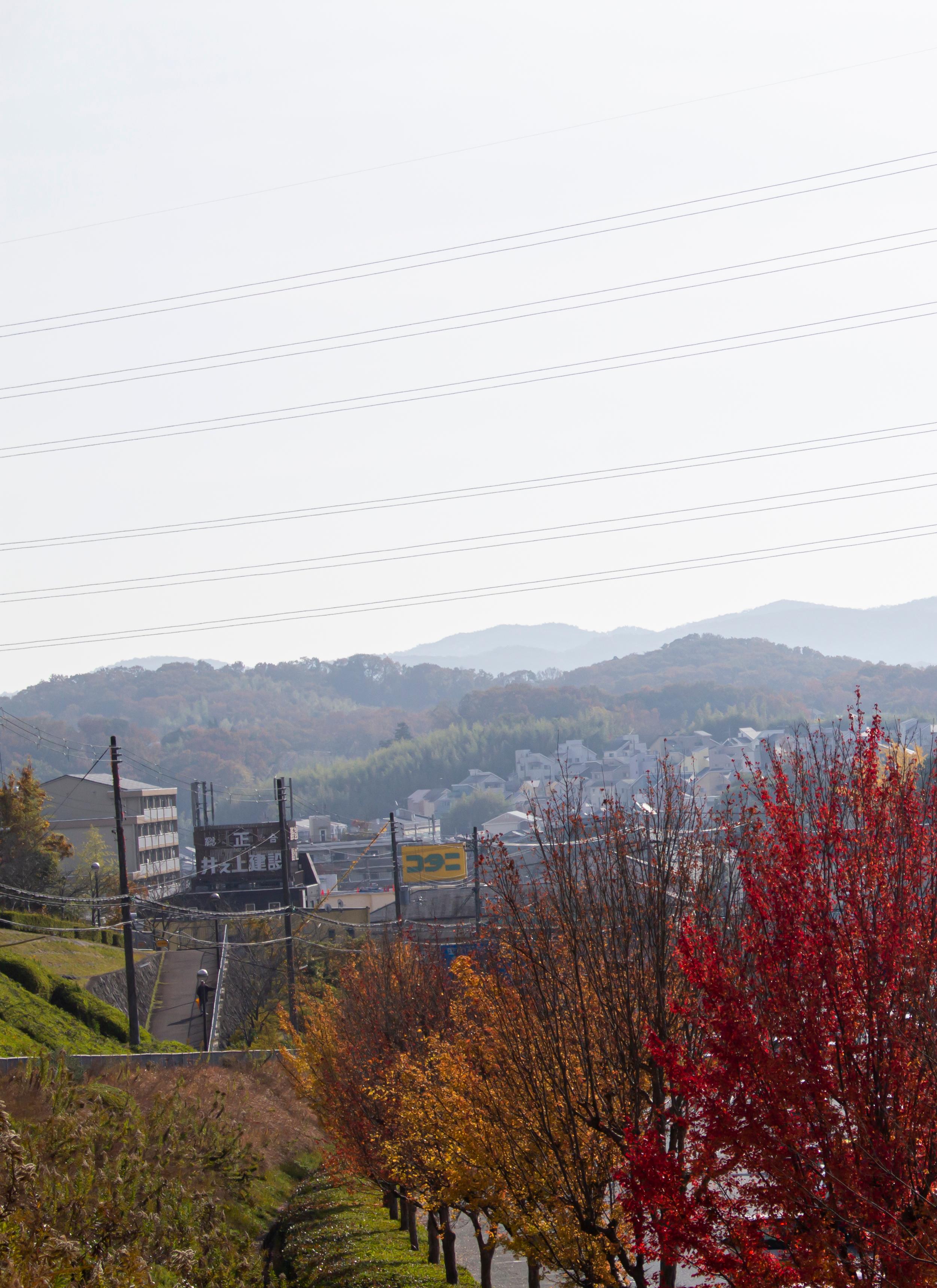
1000 kilometres on a well-loved, second-hand mamachari?

Amy Joy chuckles and, with only the slightest moment of hesitation, offers some reassurance: “I’m. . . a little concerned, especially about the mountains, but I’m prepared for the worst. I’ve got a tyre repair kit and a pump. I’ve got a basket cover so, in case it rains, it can cover my bags and things.”
“I do think my tyres will go flat eventually, but . . . we’ll see.”
Amy is planning a massive route that runs through every single one of Hyogo’s 41 official cities and towns. But, far from a lycra-clad Tour de Hyogo, she’ll be riding a mamachari (a simple, basket-bearing bike, ideally suited to short commutes and shopping trips) almost the whole way. She’ll venture out on a new leg each weekend throughout April and May.
“It’ll take roughly 8 days to go everywhere that I’ve planned, so I’ve got a little schedule going. It should be good!”
When I ask about whether she’s prepared for such a physically exhausting adventure, Amy notes the very bike in question brought her across the 70km Shimanami Kaido route between Hiroshima and Ehime prefectures.
“You cross along seven big bridges over the sea,” she says. “It was raining that whole day. But, you know, I rode the night bus to get there. I had planned out to do it all in one day, so I didn’t want to just give up.”
“I didn’t take many pictures because it was raining, but it was beautiful though. I’d recommend it in better weather.”
What I discover later is that she omits to mention each of these bridges requires climbing up a steep incline, the first of them being a 65m ascent. The Cycling Ehime website states “there is no shortage of riders who are taken aback by the sudden steep slope.”

Amy is someone who enjoys a challenge, but her latest journey is motivated by something more than just a desire to explore. She’s fundraising to help establish a new centre for cultural exchangeinherhometown.

Perth, Western Australia (WA), is not the country’s most famous city. There’s a dubious, though oft-repeated claim that it is the “most isolated state-capital in the world”, but regardless of how true or untrue that may be—growing up there can definitely feel like it (I would know, Ididtoo).
In this isolated environment, it’s easy to feel disconnected from the rest of the world. But for those interested in Japan, there was a stroke of luck. The Hyogo Cultural Centre, established in 1992 as part of a sister-state relationship with WA, provided a crucial hub for WA’s Japanese language community. The centre ran language training, promoted cultural exchange events, held a massive library of Japanese texts, and supported Japanese classes in local schools. Many Perth JETs request placements in Hyogo because of the centre’s success. There was a real sense of a vibrant, living exchange of Australian and Japanese cultures.
Unfortunately, when Hyogo Governor Saito Motohiko won the prefectural election in 2021, he promised budget cuts. After three decades supporting Perth’s Japanese language community, the HyogoCentrewasshutdown.
Amy, who now works as a JET in Sanda City, Hyogo—and is studying to teach Japanese to Australian students when she returns to her hometown—sadly remarks that she had always hoped to take students on a field-trip to the centre, but that was no longer on the table.
“[The Hyogo Centre] really helped a lot of students and the community. It really broke my heart, when I received the email to say they weren’t open anymore,” she says.
But while Perth’s Japanese language community was devastated, the sudden trauma catalysed an instant reaction. If Hyogo wouldn’t do it, the community would coordinate themselves.
“The Australia-Japan Society of WA (AJSWA) began conversations with community groups and the WA Government as soon as the Hyogo Government announced its decision to close the centre,” AJSWA President Ben Wholagan explains.

“We really wanted to keep the centre open, which led to our proposal to the WA Government and the development of a business plan to establish the Japan Education and Culture Centre of WA (JECCWA) at the current location of the former Hyogo Centre.”
Repurposing the old grounds also means JECCWA can maintain the Japanese garden and extensive library, both of which could otherwise be hefty losses to the Perth public.
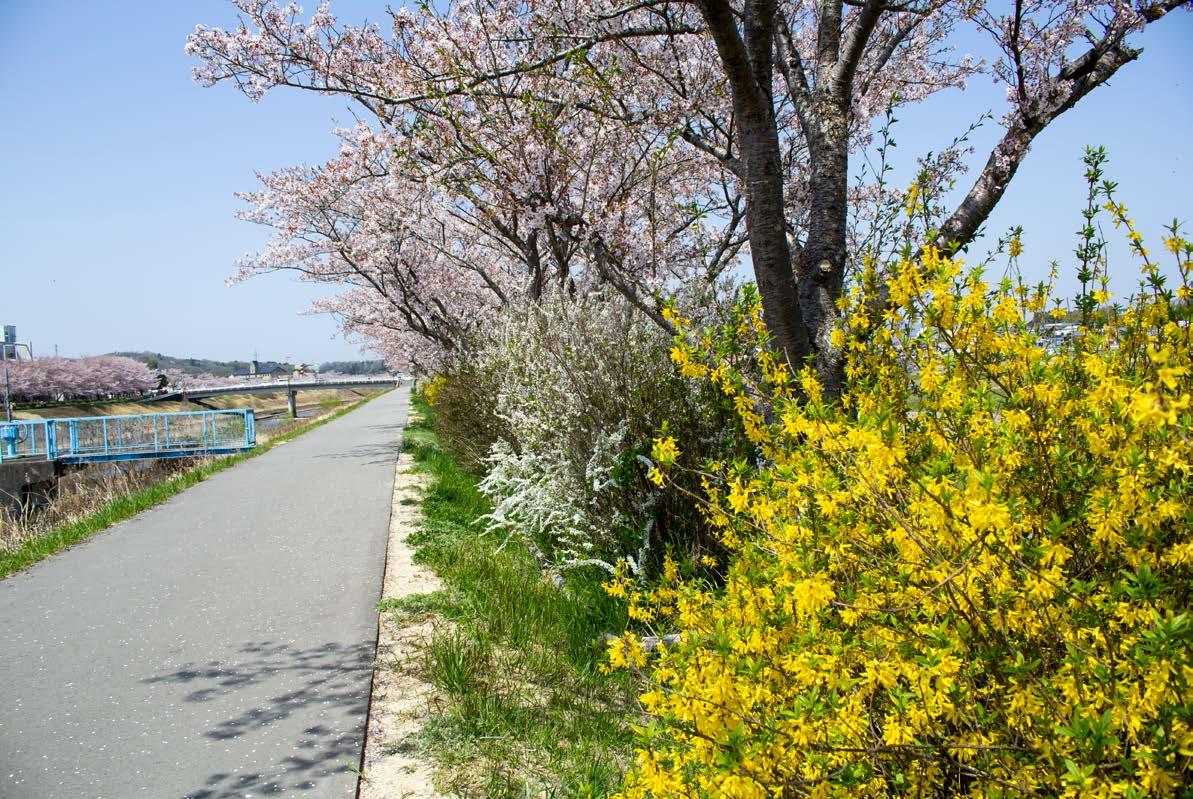
Ben says the new centre will continue to support WA’s relationship with Hyogo, but will also broaden out to serve as a meeting place for like-minded community groups, language teachers, school groups and anyone with an interest in Japan or the WA-Japan relationship.
Amy’s hoping her Hyogo cycle tour will encourage exactly this kind of interest and enthusiasm for Japanese culture so the new centre can burst to life once it gets the go ahead.
It’ll be a journey of discovery for Amy as well. While she’s brought her photographer’s eye to many different places in Japan, she has yet to thoroughly explore her own home prefecture.
“I would really like to share onsen culture, and rural villages . . . buildings, nature, there’s even an old mine that one of my teachers told me about. Just places you wouldn’t really expect to go.”
She’s excited to show off all Hyogo has to offer, from the springtime cherry blossoms and flower gardens to the plethora of unique specialty snacks each town prides itself on.
“I want to connect people in Japan and Australia, and everywhere.”
“I hope that through this challenge I will inspire and encourage people to dig deep. You know, even five dollars, even a dollar, if everyone supports something like this, together we can make it happen.”
Amy will document her entire journey, publishing stories and photos to Instagram @AmyJoy2213. If you’d like to help with the campaign to fund the Perth JECCWA you can donate directly at Raisely or pledge to Amy’s fundraiser through this Google Form
Jon Solmundson is a Canadian-born, Australian-raised, CONNECT copy editor currently living in the sleepy cabbage-town of Nanporo, Hokkaido. When not teaching English, he enjoys board games, camping, and a spot of photography.

CONNECTisamagazineforthe communityinJapan,bythe communityinJapan.Everyone iswelcometowrite,nomatter yourexperienceorstyle!Ifyou haveanideayouwanttoseein thesepages,reachouttoour HeadEditor,oranyofour awesomesectioneditors.We’ll workwithyoutomakeitthe bestitcanbeandshareitwith ouraudienceofthousands.Not everyarticleneedstobean essay!Wefeatureinterviews, infographics,top-tenlists, recipes,photospreads, travelogues,andmore.
ContacttheHeadEditorof CONNECT,MonicaHand,at connect.ajet.editor@gmail.com withyoursubmissions, comments,andquestions.
Writeaboutsomethingyou’re doing.Writeaboutsomething youlove.Tellusastory.
SPOTLIGHT
Tellus about someone inyour communitywho’sdoing somethingneatandnoteworthy. Cooks,collectors,calligraphers— wewanttohearaboutthe inspiringpeoplearoundyou.
PHOTOS
Members oftheJETcommunity contributedtothephotosyou seeinthisissue.Ifyou’rean aspiringphotographerandwant yourworkpublished,pleaseget incontactwiththelead designer, LloydCruickshank,at connect.ajet.visualmedia@g mail.com.
Letusknowwhatyouthink. InteractwithusonFacebook, Twitter,andissuu.com.
CONTRIBUTORSPAGE
Haveanarticleyouwantto share?JoinourContributorsPage onFacebooktostayconnected withourteamsoyoucanshare youradventureswheneverstory strikes!
Interestedincontributingto CONNECT?Wanttostayup-to-dateoninterviewopportunities, photorequests,and CONNECT announcements?Getinvolvedwith CONNECT bycontacting ourcurrent CONNECT staffandreadingaboutthepossiblepositions here
Youcanalsolikeuson Facebook,followuson Instagram,andinteractwiththemagazinevia CLIPat ISSUU